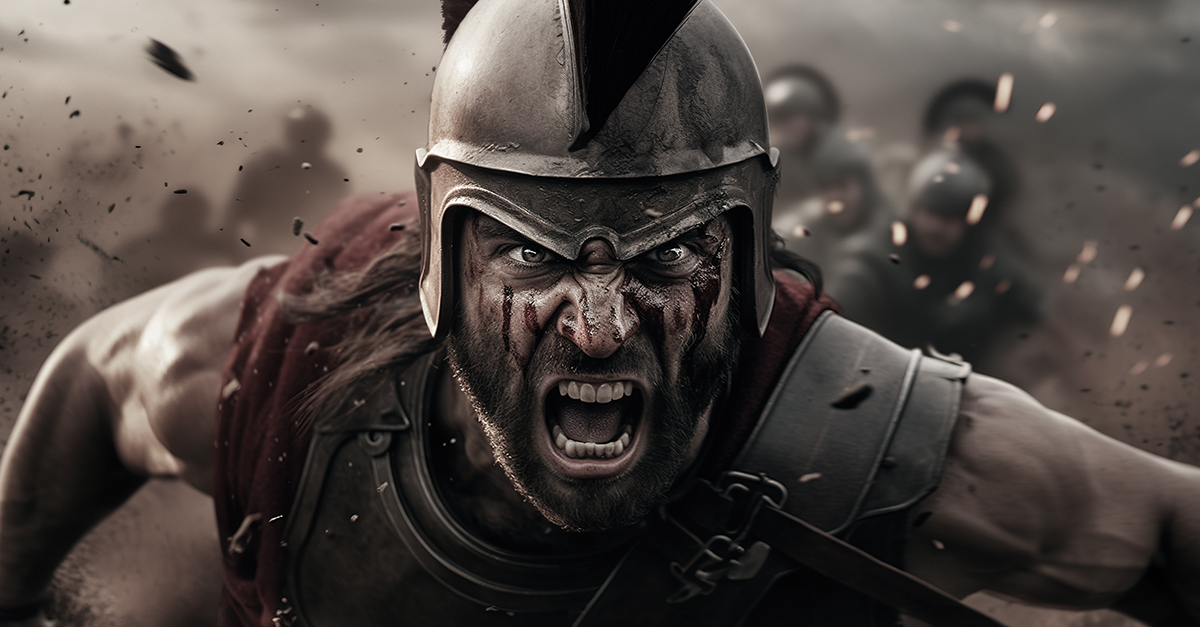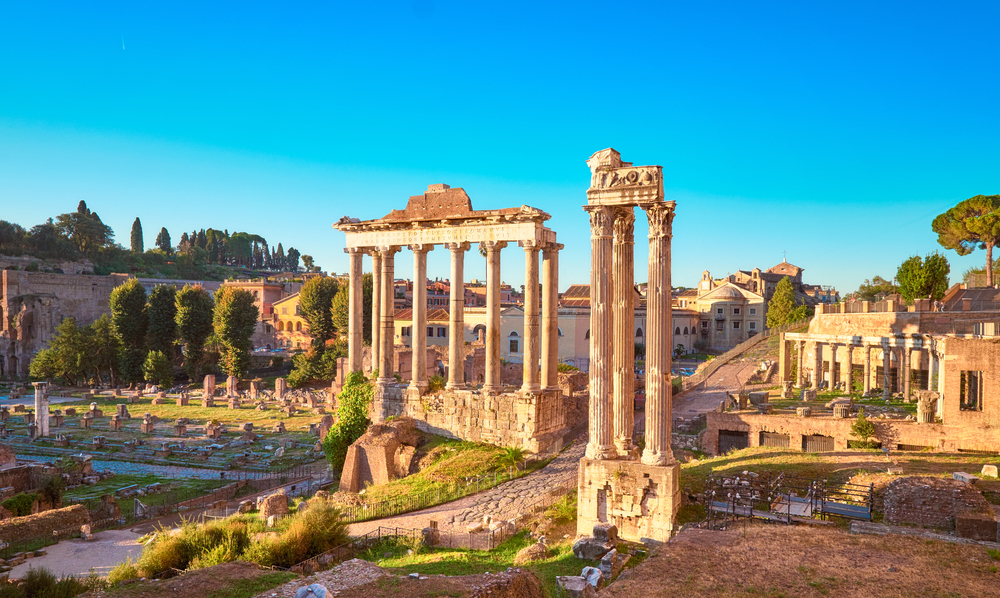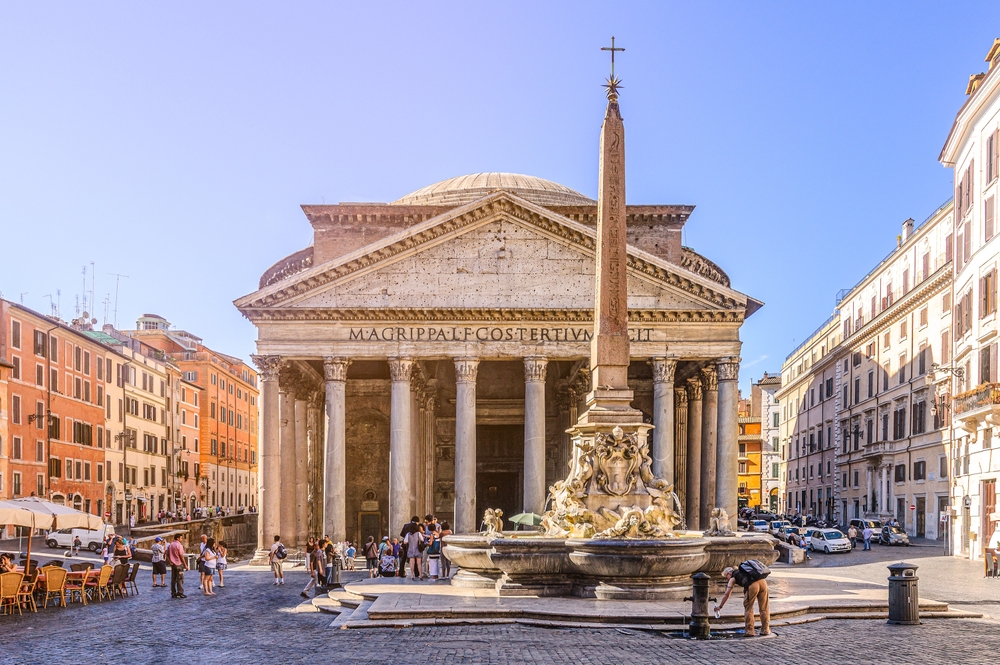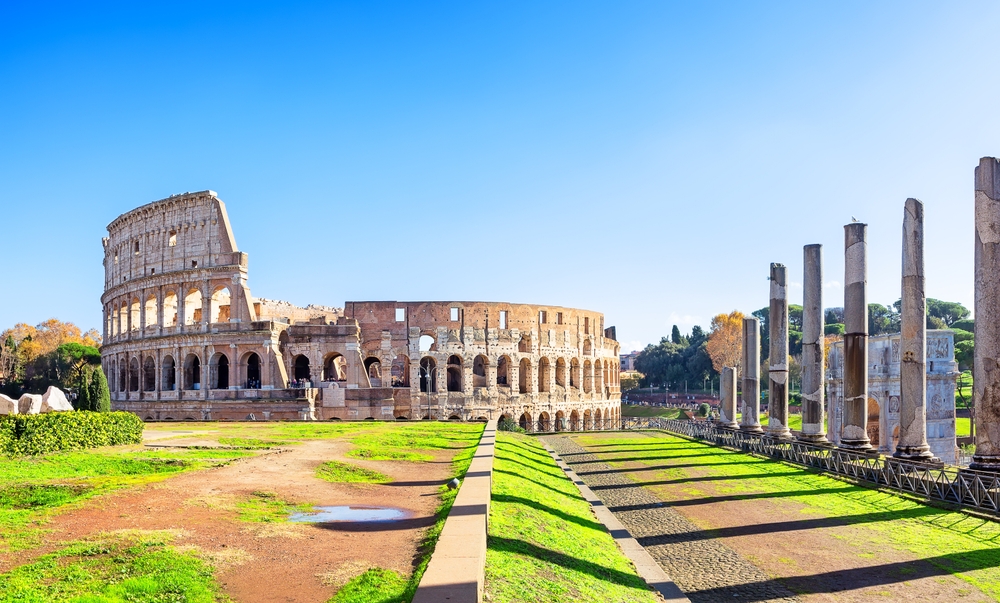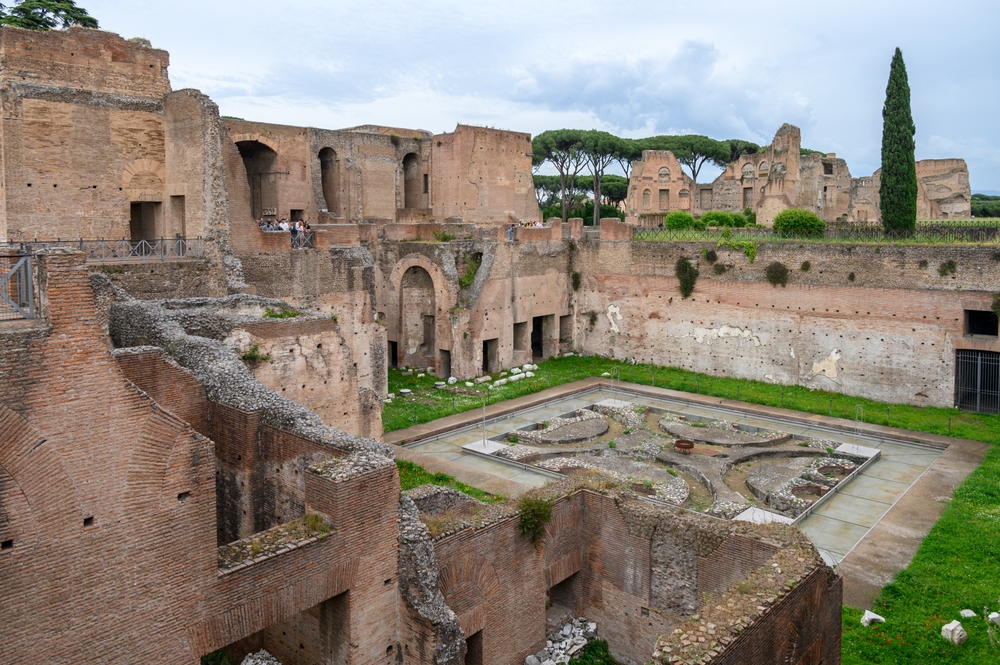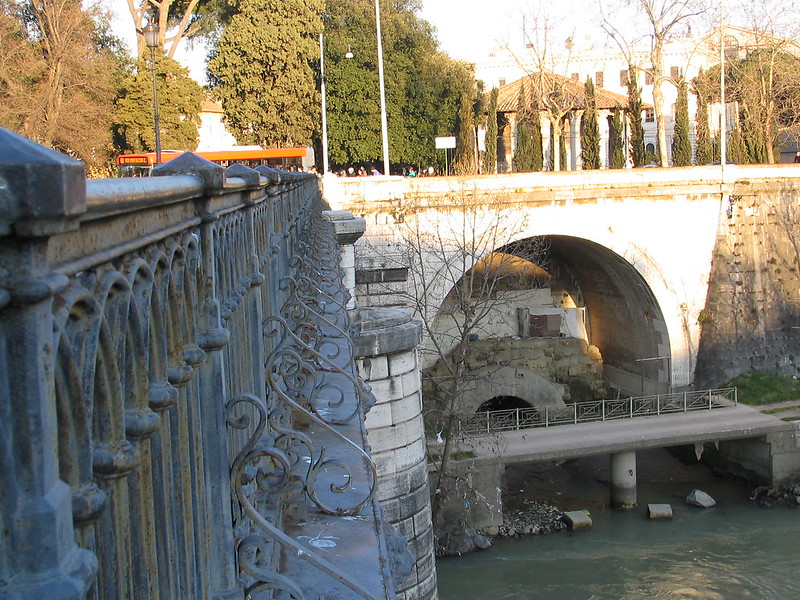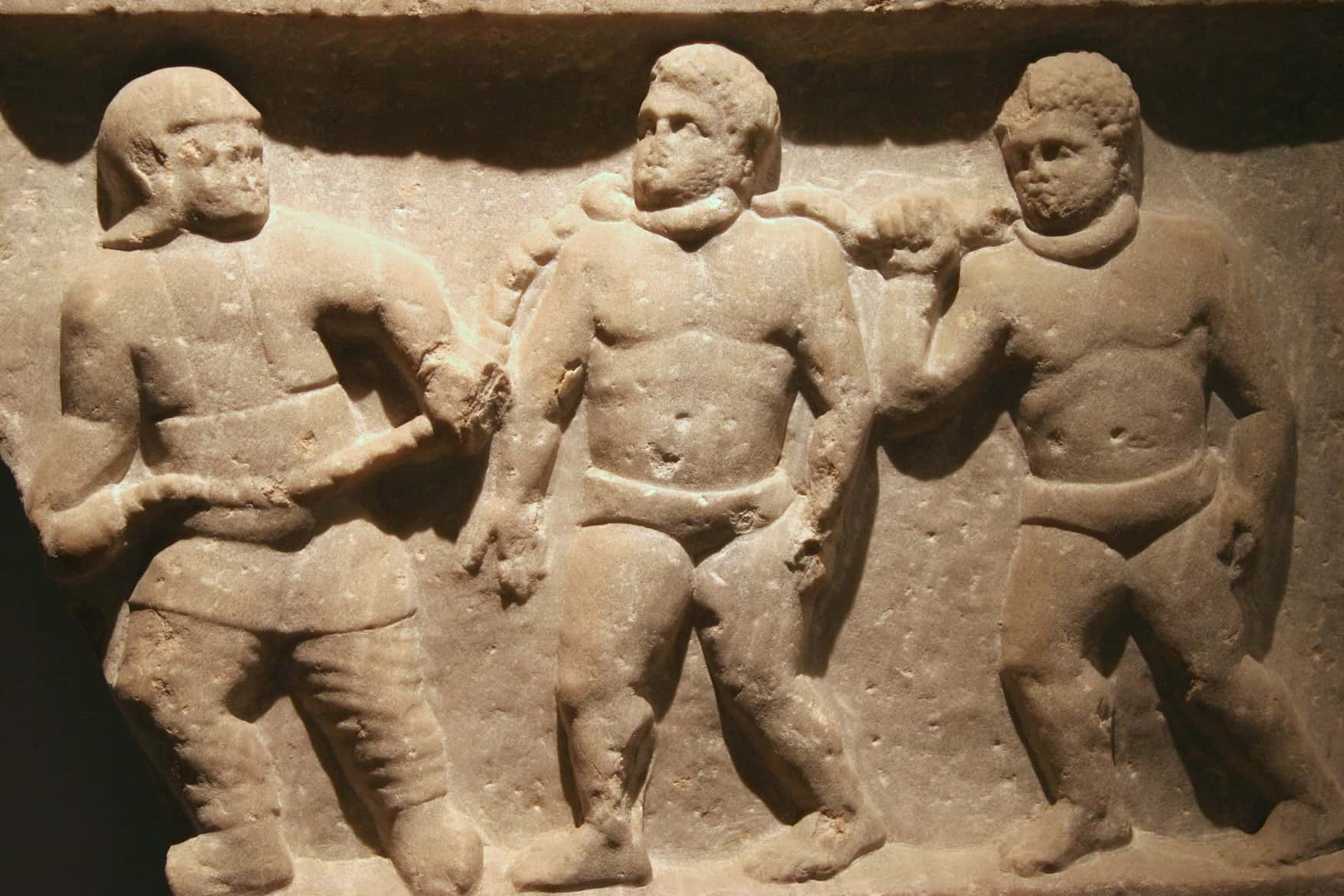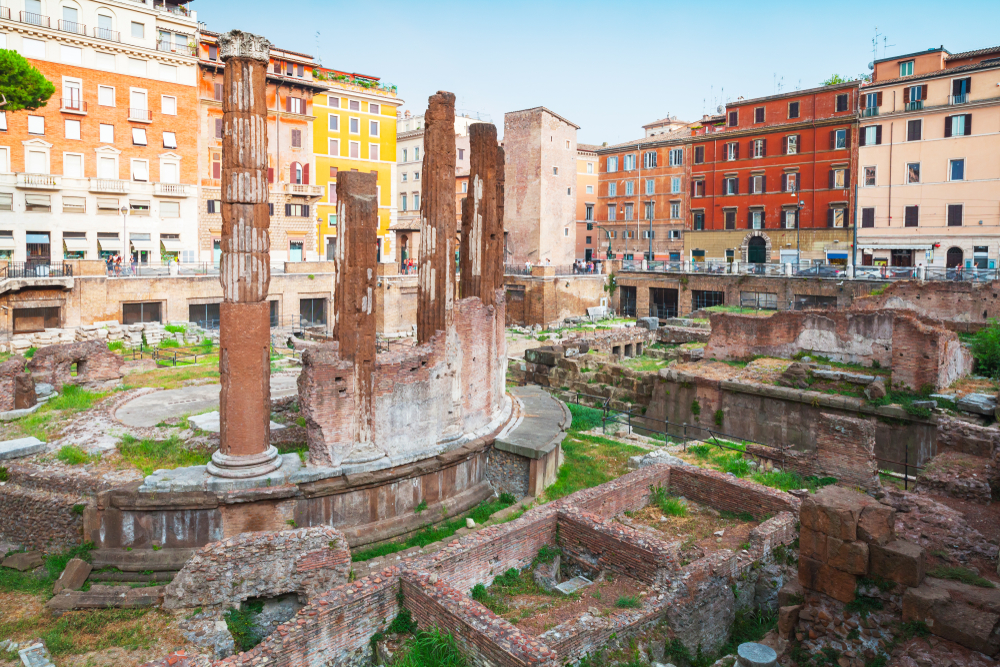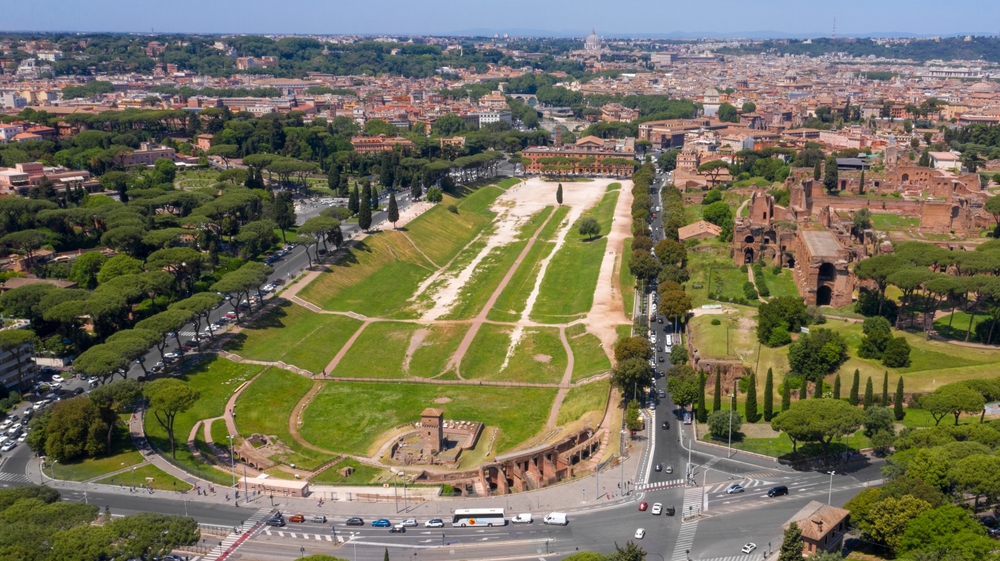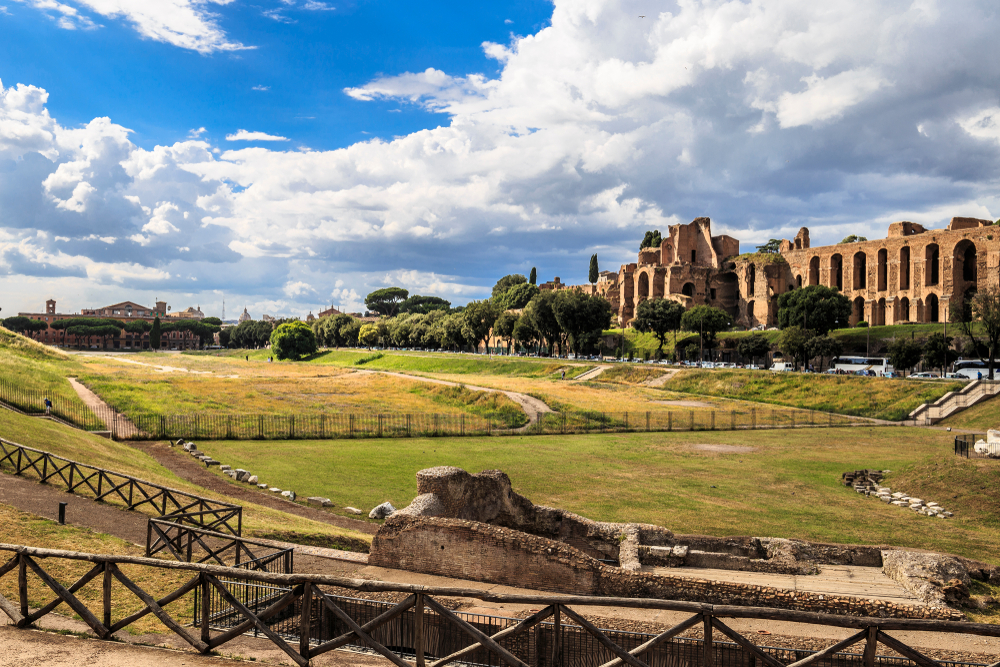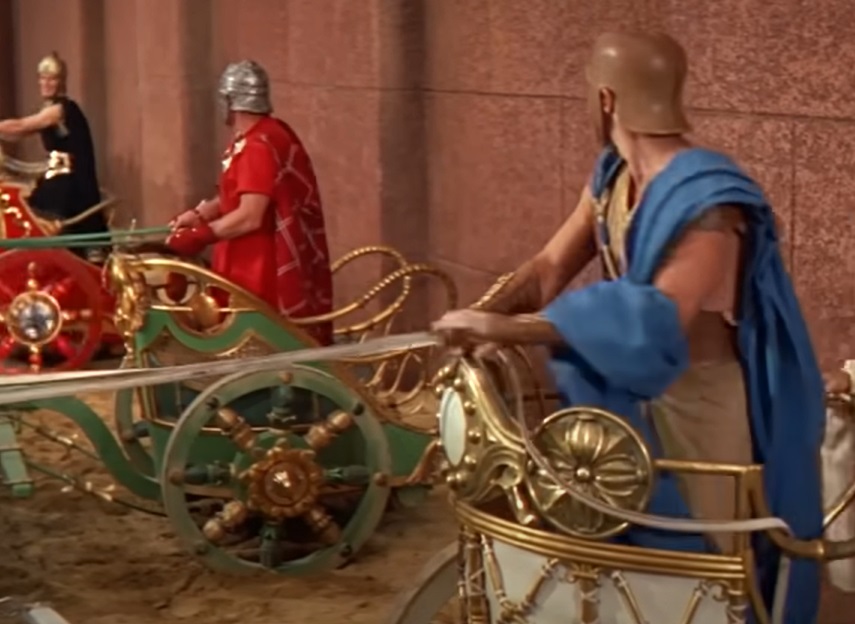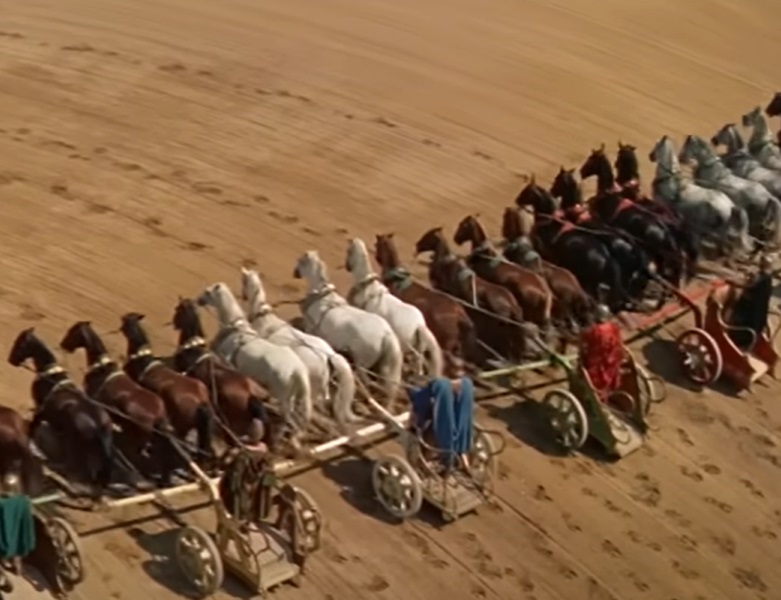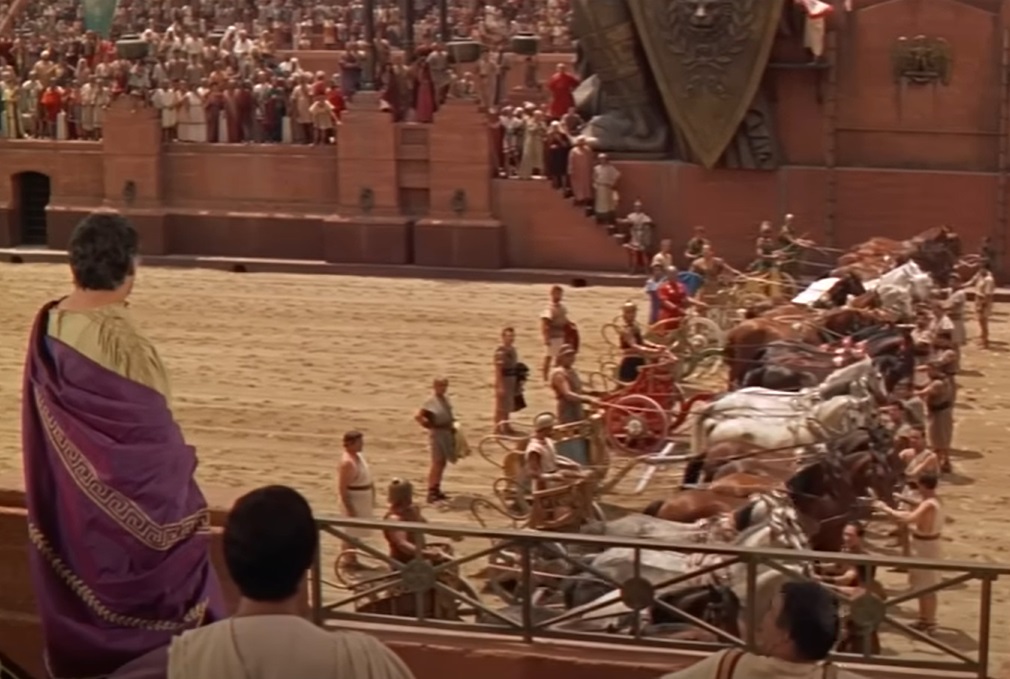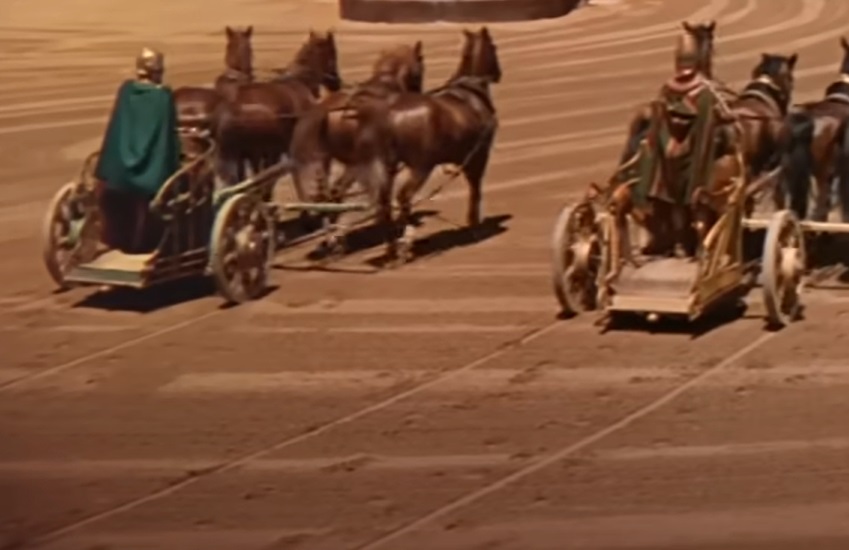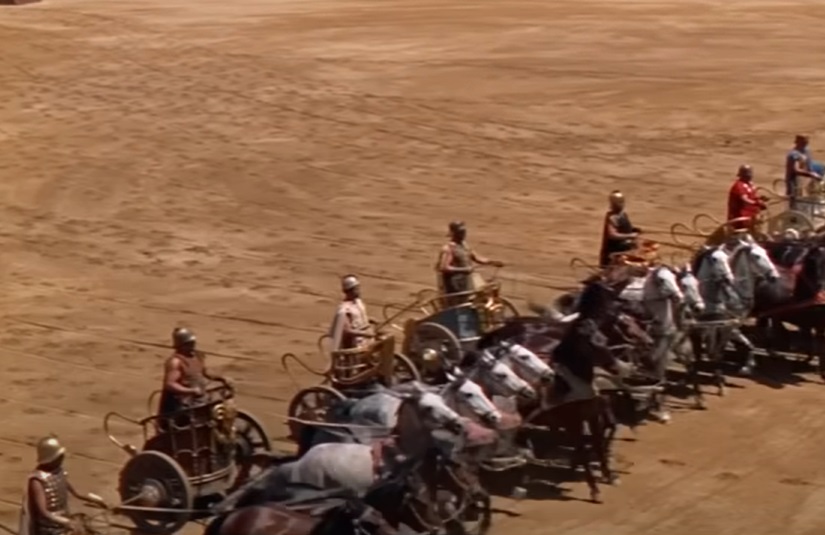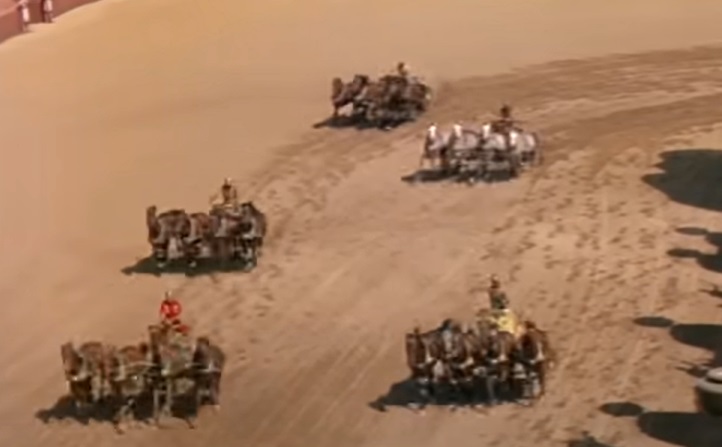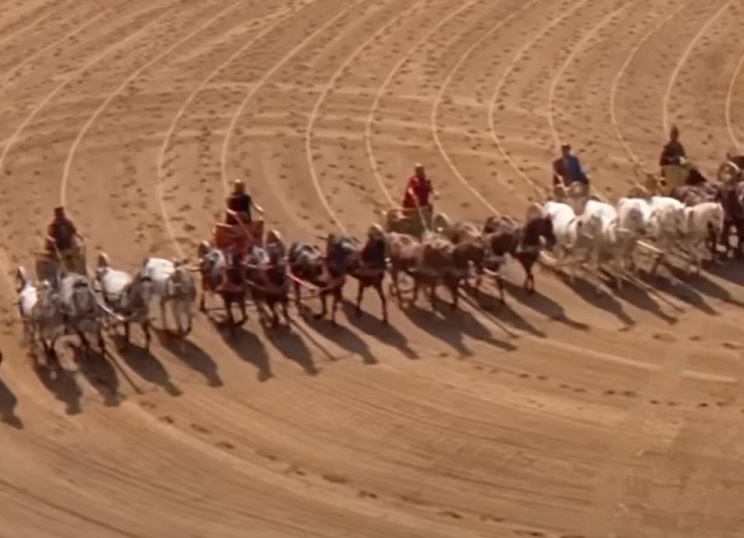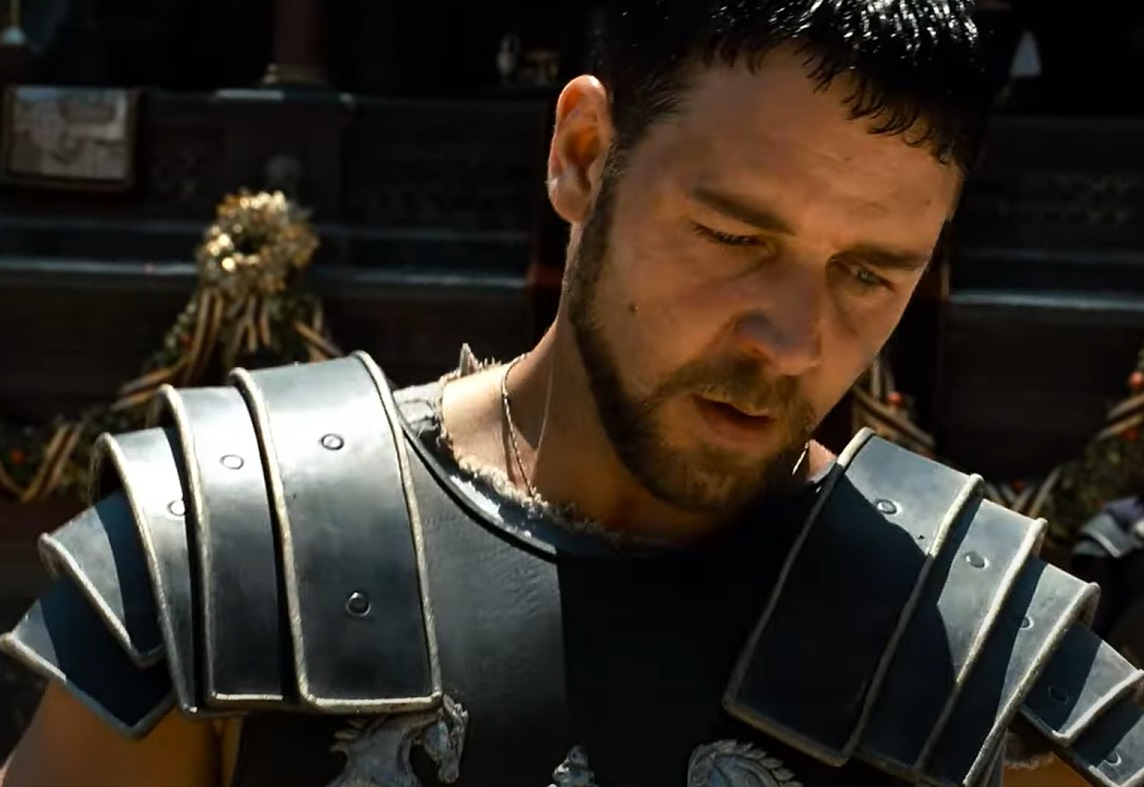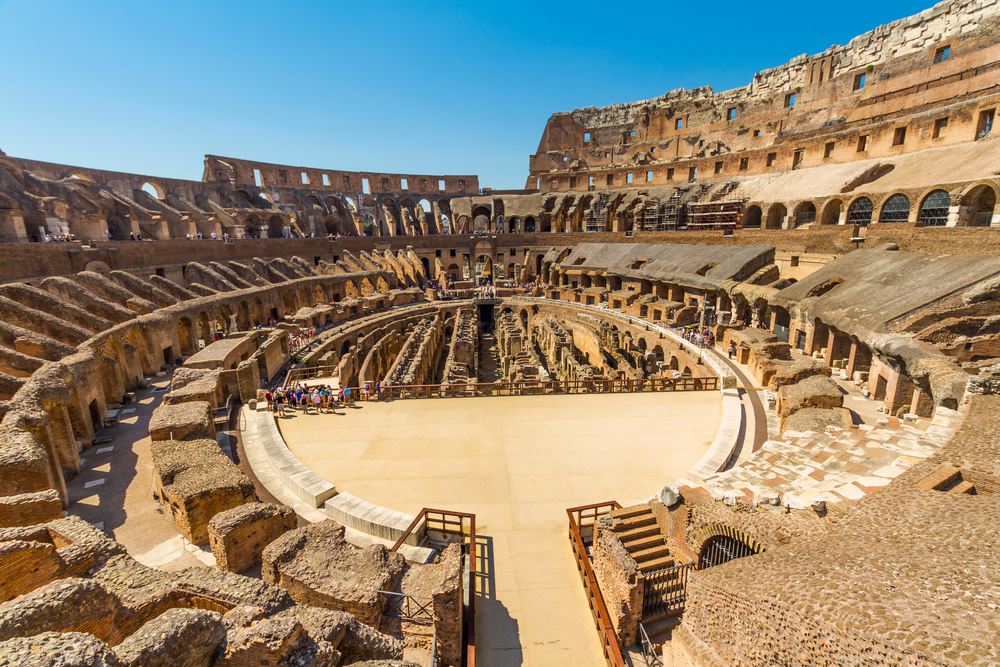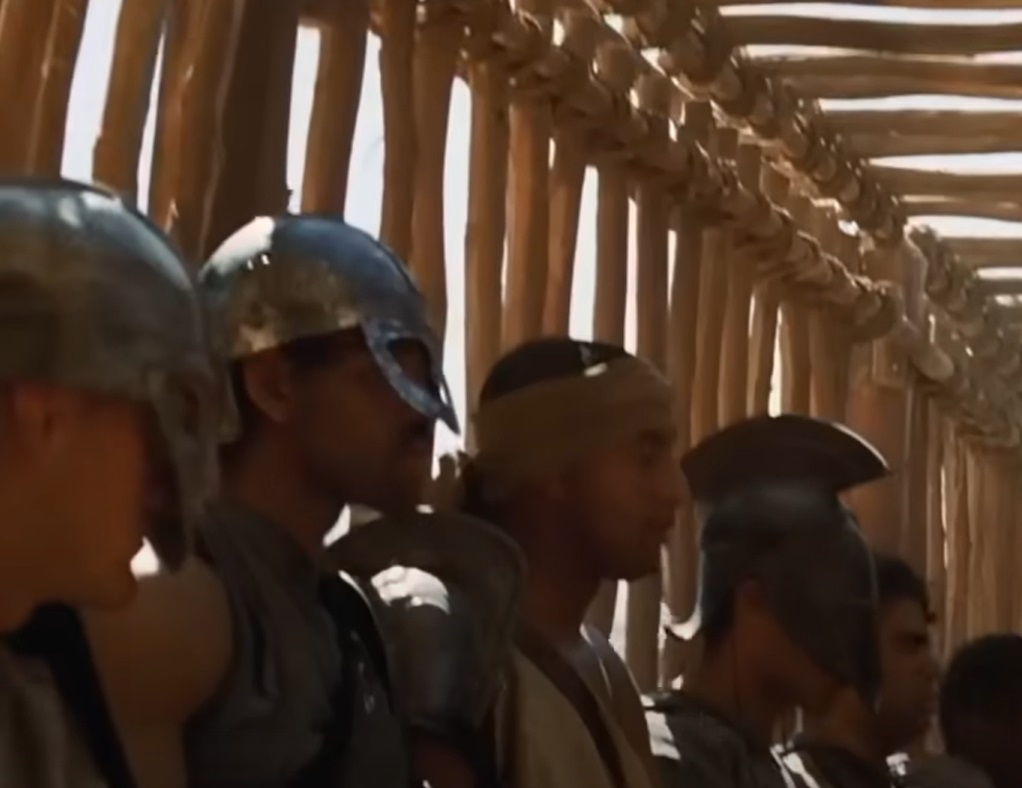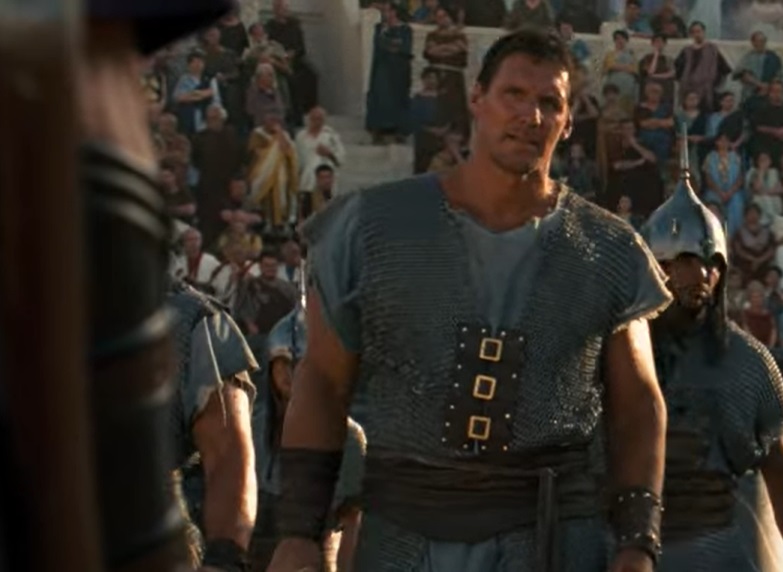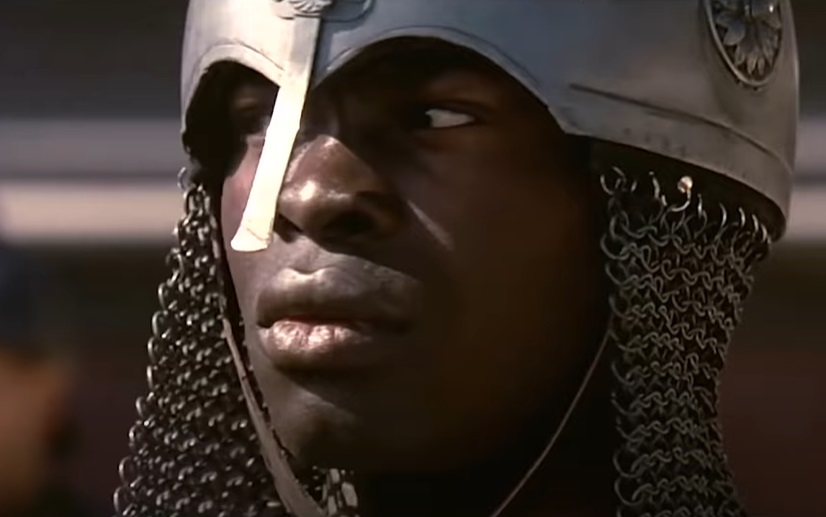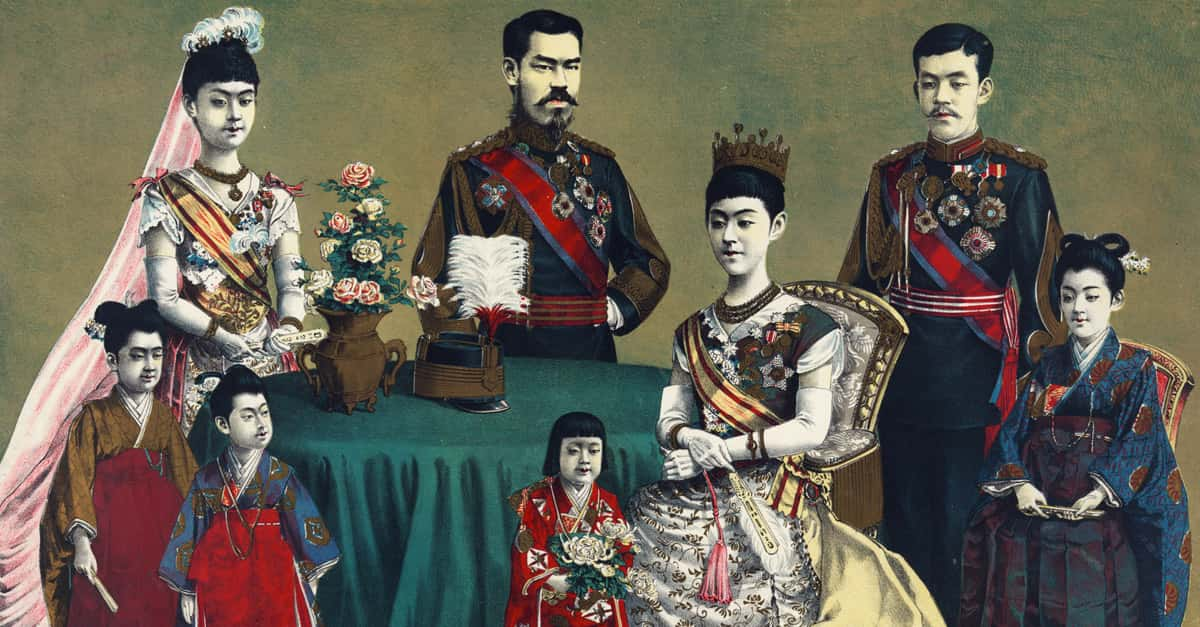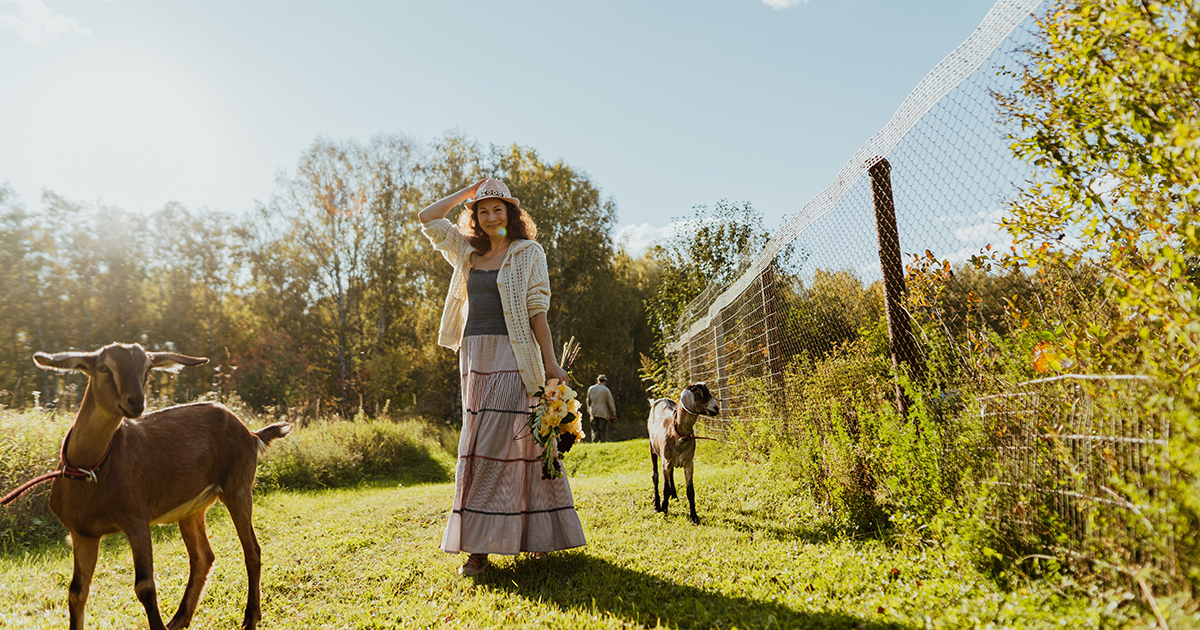One Of History's Most Fascinating Civilizations
Ancient Rome is a civilization that still fascinates us to this day. With its rich, and sometimes brutal culture, there's a reason why we still resurrect its stories and famous figures.
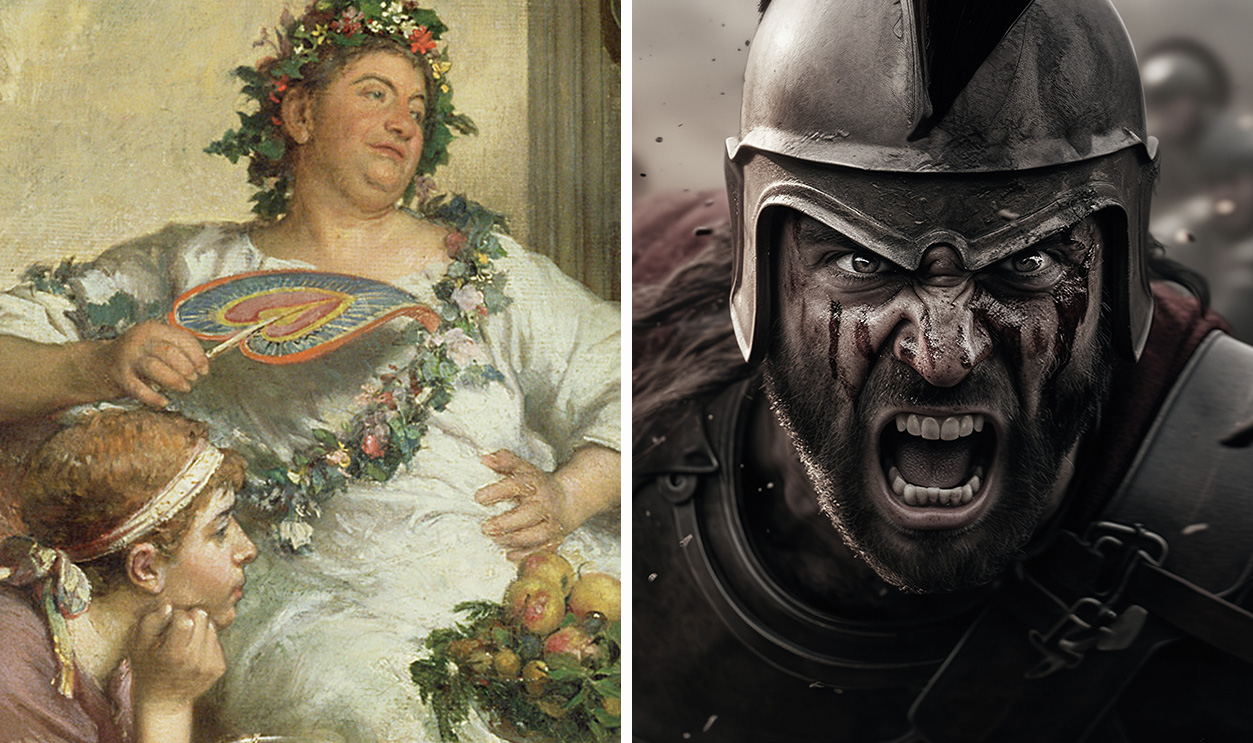
From The Beginning
Beginning in the 8th century BC and ending in the 5th century AD, ancient Rome's history showcases some of humanity's most shocking roots. Here's a small glimpse into some of the most interesting aspects of ancient Roman culture.
Thinking Of Rome
Geographically, ancient Rome included the city of Rome and its seven hills. If you're familiar with some of its famous architecture, images of the Pantheon, the Colosseum, and even Trajan's forum might come to mind.
Drawing Parallels To Today
But beyond these unbelievable markers of Roman history, people were just trying to live their normal, little lives. Ancient Romans moved within a city filled with theaters, gyms, baths, taverns, and brothels.
Life Expectancy
Unfortunately, ancient civilizations have never been known for their robust life expectancy rates. In ancient Rome, the life expectancy was quite young—just 20 to 30 years. However, these numbers were very skewed for a tragic reason.
 History, Rome: Rise and Fall of an Empire (2008)
History, Rome: Rise and Fall of an Empire (2008)
Life Expectancy
You see, childbirth took the lives of many young mothers—and on top of that, infant mortality was also high. Those who survived to adulthood, however, had a good chance of leading a longer life.
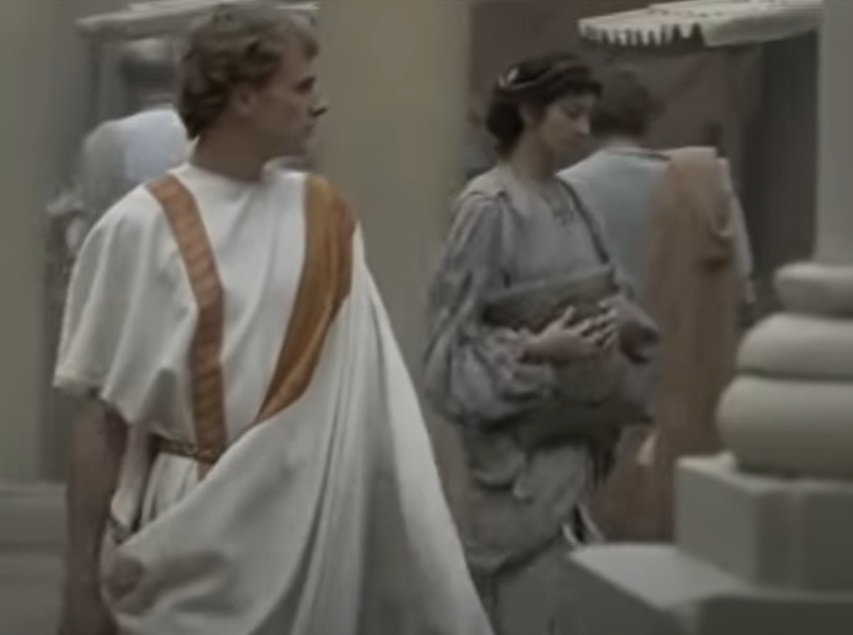 History, Rome: Rise and Fall of an Empire (2008)
History, Rome: Rise and Fall of an Empire (2008)
Who Lived Where?
Just like today, your class determined where you lived, whether it be in a small house or a rural villa, or even an imperial palace on Palatine Hill. Of course, most of the population—low to middle class—resided in apartments in the bustling city center, usually paying rent to the higher class.
The Population
As the dominant megalopolis, the city of Rome had an estimated 450,000 to 3.6 million people. This was a lot of mouths to feed and required some serious organization when it came to food distribution.
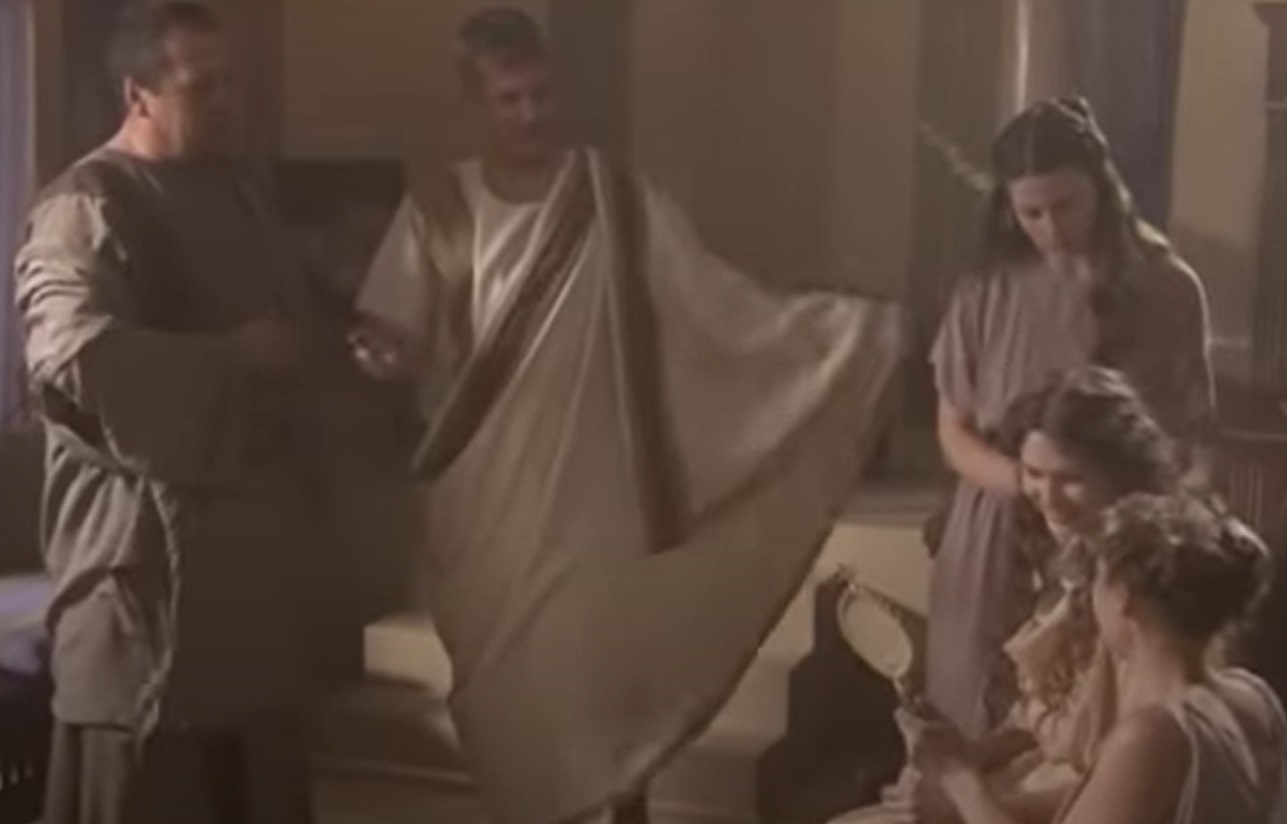 History, Rome: Rise and Fall of an Empire (2008)
History, Rome: Rise and Fall of an Empire (2008)
Millions Of Mouths To Feed
So where did ancient Romans get their food? Fresh produce came from Italian farms. However, proteins like meat and fish were considered to be extravagant foods. Thanks to the many miles of aqueducts, people had access to drinking water.
Other goods like oil and wine were imported products, coming from places like Africa or Hispania.
 History, Rome: Rise and Fall of an Empire (2008)
History, Rome: Rise and Fall of an Empire (2008)
What Did People Eat?
The meals ancient Romans indulged in consisted of quite simple fare. At around 11 am, they would likely eat any leftover dinner meat, as well as bread, olives, cheese, nuts, salad, and fruits. After enjoying their morning meal, they would likely lie down for a nap or take a restful break.
And, of course, they had very different words for what we commonly refer to as breakfast, lunch, and dinner.
The Meal Breakdown
Ancient Roman meals were as follows: ientaculum (breakfast), prandium (lunch), and cena (dinner). Gustatio referred to any appetizers, while secunda mensa—meaning "second table"—was their dessert. However, their dessert might not be what you were expecting.
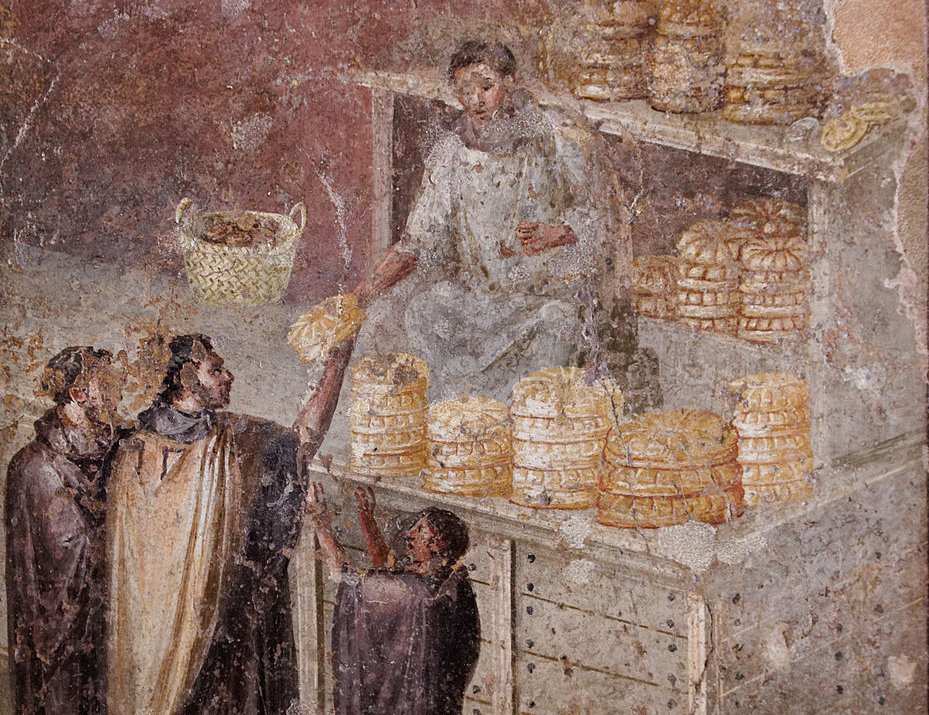 Marie-Lan Nguyen, Wikimedia Commons
Marie-Lan Nguyen, Wikimedia Commons
Dessert Without Sugar
Today, we are privileged to have refined sugar and butter at our fingertips. Ancient Romans, on the other hand, had no choice but to get their sugar fix from a much healthier alternative.
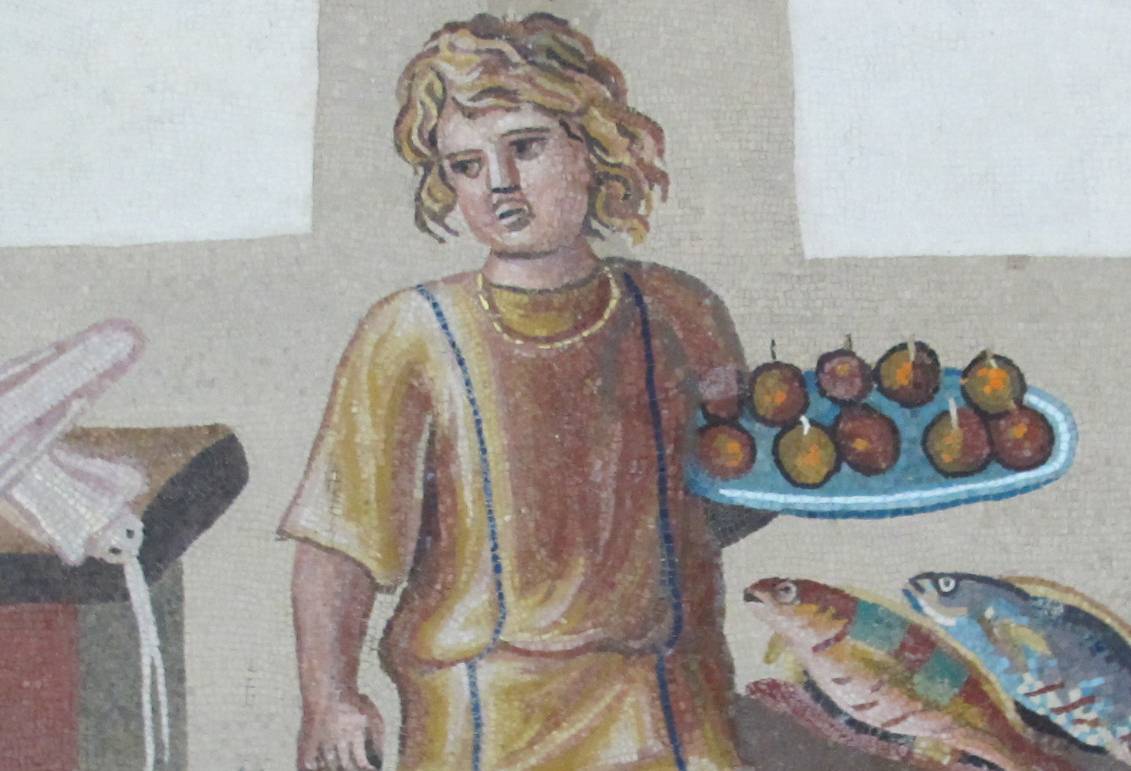 I, Sailko, CC BY-SA 3.0, Wikimedia Commons
I, Sailko, CC BY-SA 3.0, Wikimedia Commons
Dessert Without Sugar
For dessert, they would feast on large dishes of fruit—the sweeter the better. There were also pastries called sprias that sometimes had a fruit filling, as well as a dessert reminiscent of a sponge cake called enkythoi.
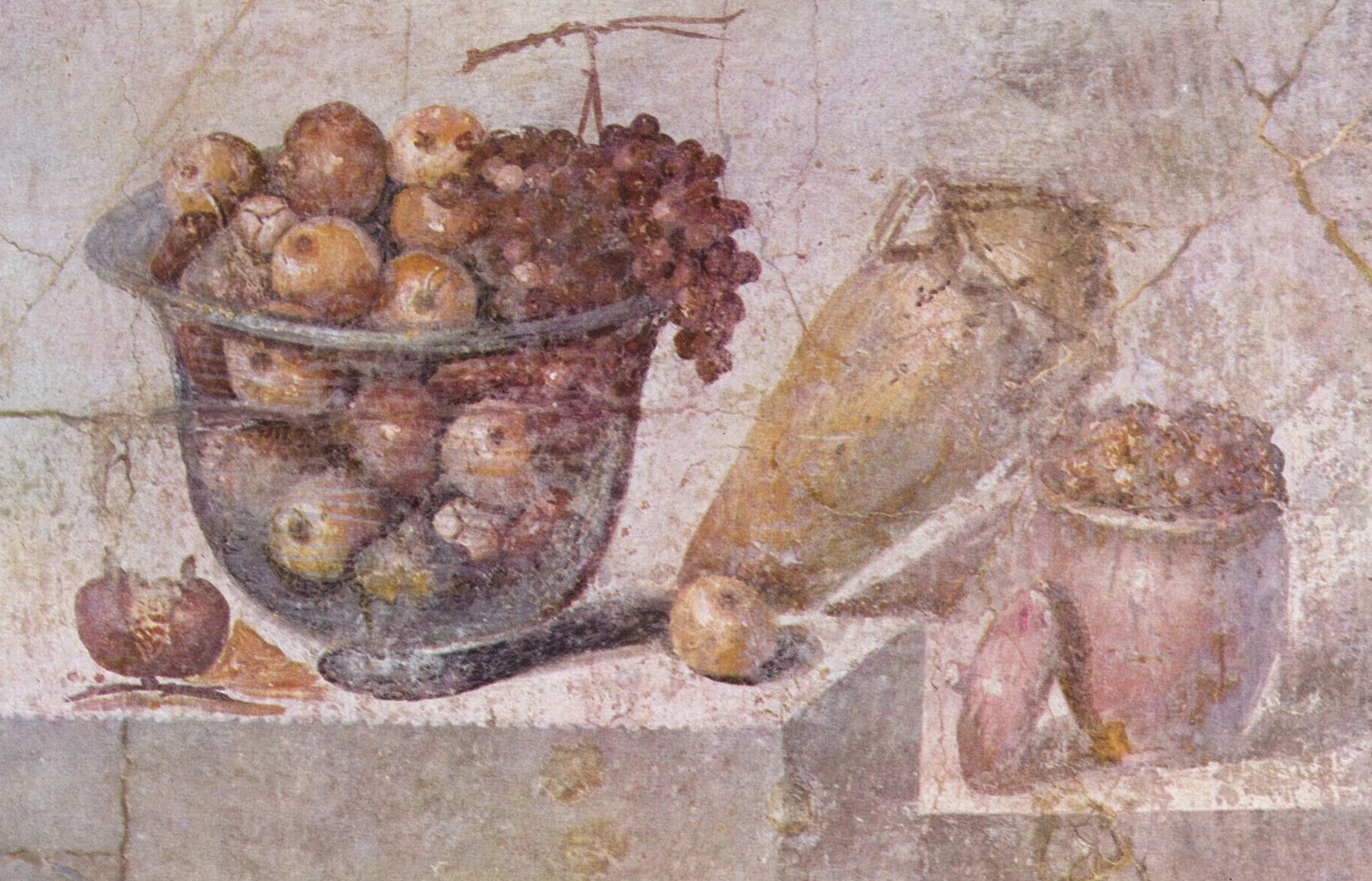 The Yorck Project, Wikimedia Commons
The Yorck Project, Wikimedia Commons
Drinking Culture
It wasn't until 250 BC that wine became one of the most common beverages. As it was surprisingly inexpensive, people from all walks of life drank it at every meal. However, there was one thing ancient Romans did to their wine that we do not.
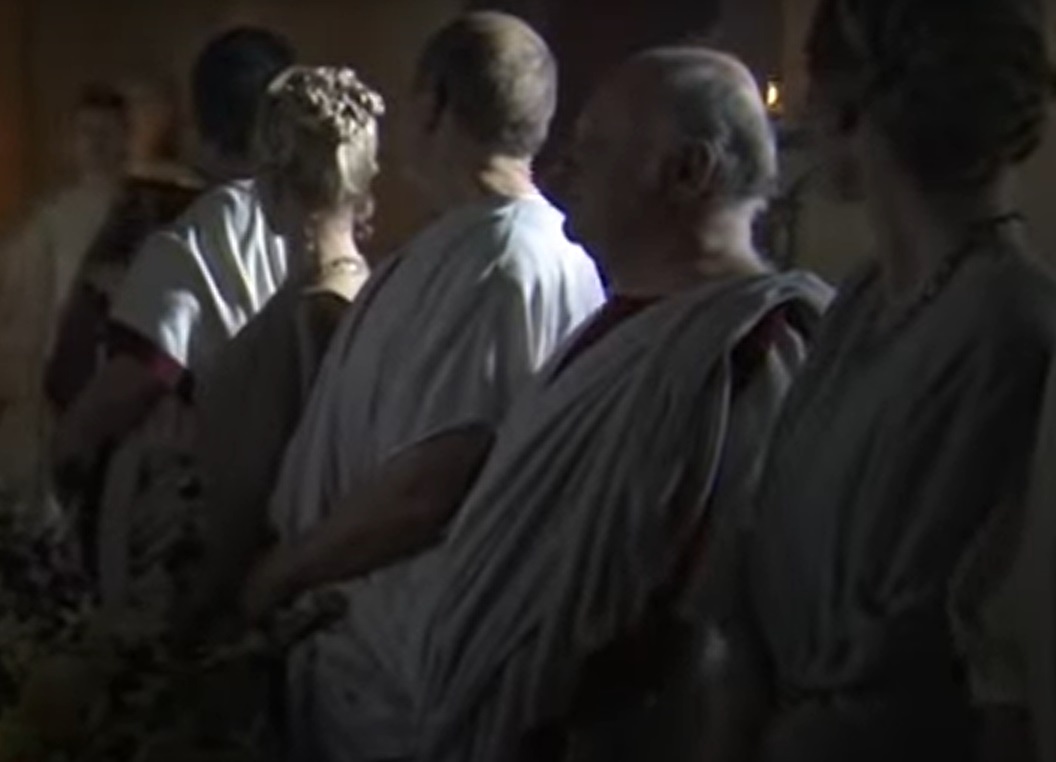 History, Rome: Rise and Fall of an Empire (2008)
History, Rome: Rise and Fall of an Empire (2008)
Drinking Culture
Before drinking their wine, ancient Romans always diluted it with water. Popular ratios used to water down the beverage were: 1:2, 1:3, or 1:4. After all, people harshly judged those who chose to drink the beverage straight—and for a very familiar reason.
 History, Rome: Rise and Fall of an Empire (2008)
History, Rome: Rise and Fall of an Empire (2008)
Drinking Culture
Even back in ancient Rome, drinking too much was a bad habit to be looked down upon. However, that didn't mean there weren't some very famous heavy drinkers from Roman history, including Mark Antony and Emperor Tiberius.
 History, Rome: Rise and Fall of an Empire (2008)
History, Rome: Rise and Fall of an Empire (2008)
Drinking Culture
People also drank an assortment of other drinks that were made from honey and grapes: mustum (grape juice), mulsa (honeyed water), and mulsum (honeyed wine).
 History, Rome: Rise and Fall of an Empire (2008)
History, Rome: Rise and Fall of an Empire (2008)
Education: Childhood
By 200 BC, formal education became entrenched in ancient Roman culture. Around the age of six, children would begin their studies. By the time they turned 12, they should have become well-versed in basic knowledge, including counting, reading, and writing. But this wasn't the end of their schooling.
Education: Oration
As children grew into young adults, their studies only intensified. Building on their education, they learned new languages like Latin and Greek. They also studied literature, grammar, and oration. In fact, public speaking was especially important—a highly prized skill. However, not everyone had the privilege of going to school.
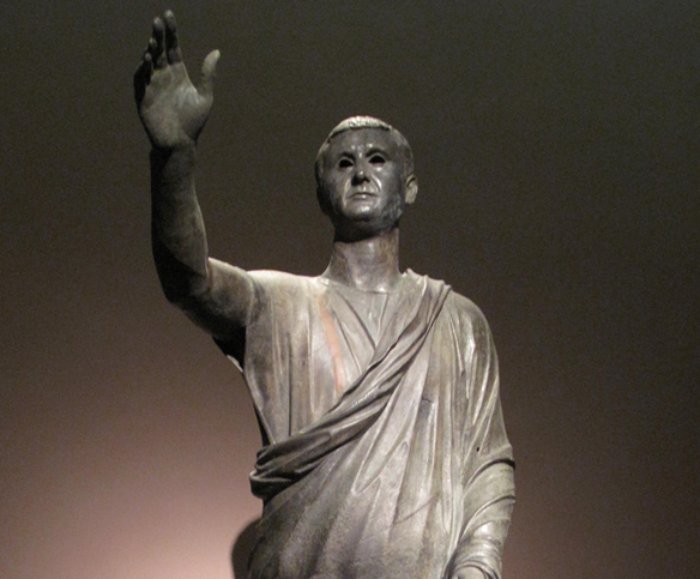 National Archaeological Museum, CC BY 2.0, Wikimedia Commons
National Archaeological Museum, CC BY 2.0, Wikimedia Commons
Education: The Poor Struggled
Children born into poor families simply couldn't afford an education, and it was more common for boys to get an education than young girls. Of course, the wealthier you were, the greater your chance of snagging a decent education.
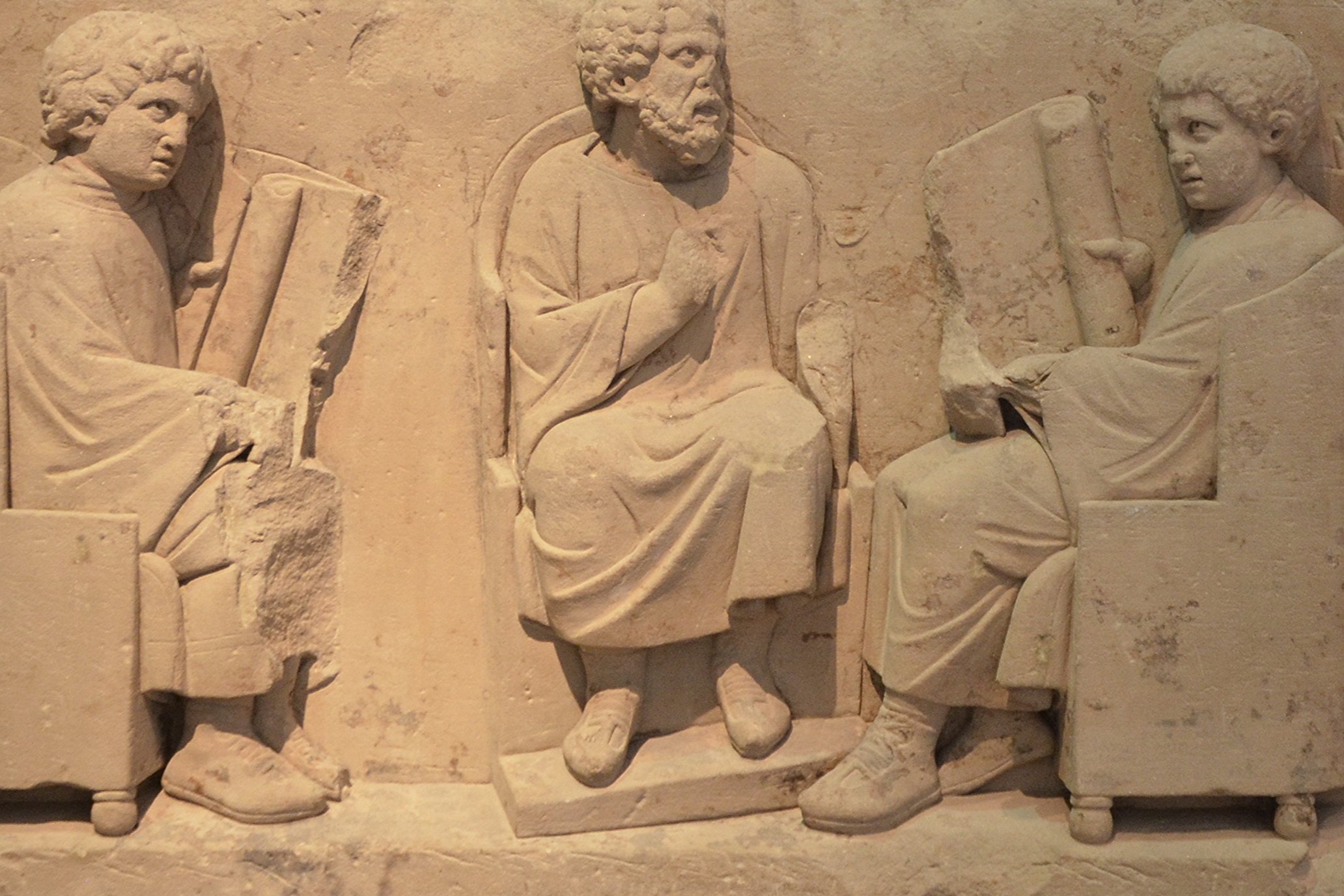 Carole Raddato, CC BY-SA 2.0, Wikimedia Commons
Carole Raddato, CC BY-SA 2.0, Wikimedia Commons
Hygiene
Perhaps one of the most fascinating aspects of any culture is how they approach hygiene. So, how did ancient Romans clean themselves and go to the bathroom?
 History, Rome: Rise and Fall of an Empire (2008)
History, Rome: Rise and Fall of an Empire (2008)
Hygiene: Going To The Bathroom
Though there were private toilets called latrina, where the word "latrine" comes from, there were also foricae—or public toilets. These public spaces were usually connected to a public bath.
 Le plombier du désert, CC BY-SA 4.0, Wikimedia Commons
Le plombier du désert, CC BY-SA 4.0, Wikimedia Commons
Hygiene: Close Quarters
It seems that ancient Romans had a greater tolerance for close proximity, whether it be at the theater or doing their private business. Defecating close to one another was just a part of their daily lives. However, there was a shocking lack of toilet paper.
 History, Rome: Rise and Fall of an Empire (2008)
History, Rome: Rise and Fall of an Empire (2008)
Hygiene: No Toilet Paper
Though they did not have the luxury of using toilet paper, ancient Romans still managed to wipe their dirty behinds—but they did so with a tool that would not meet our modern hygiene standards whatsoever.
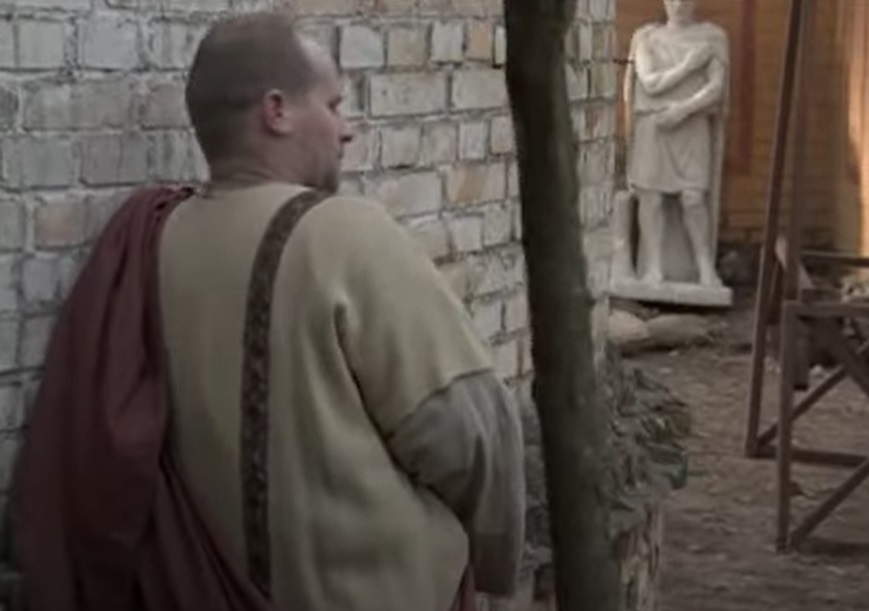 History, Rome: Rise and Fall of an Empire (2008)
History, Rome: Rise and Fall of an Empire (2008)
Hygiene: The Tersorium
Enter: The tersorium. Tersorium translates to "a wiping thing". It was a simple instrument—a stick with a sea sponge attached to one end. After cleaning up with the tersorium, they would dip it into a gutter filled with clean water to refresh it. But this obviously posed a serious problem.
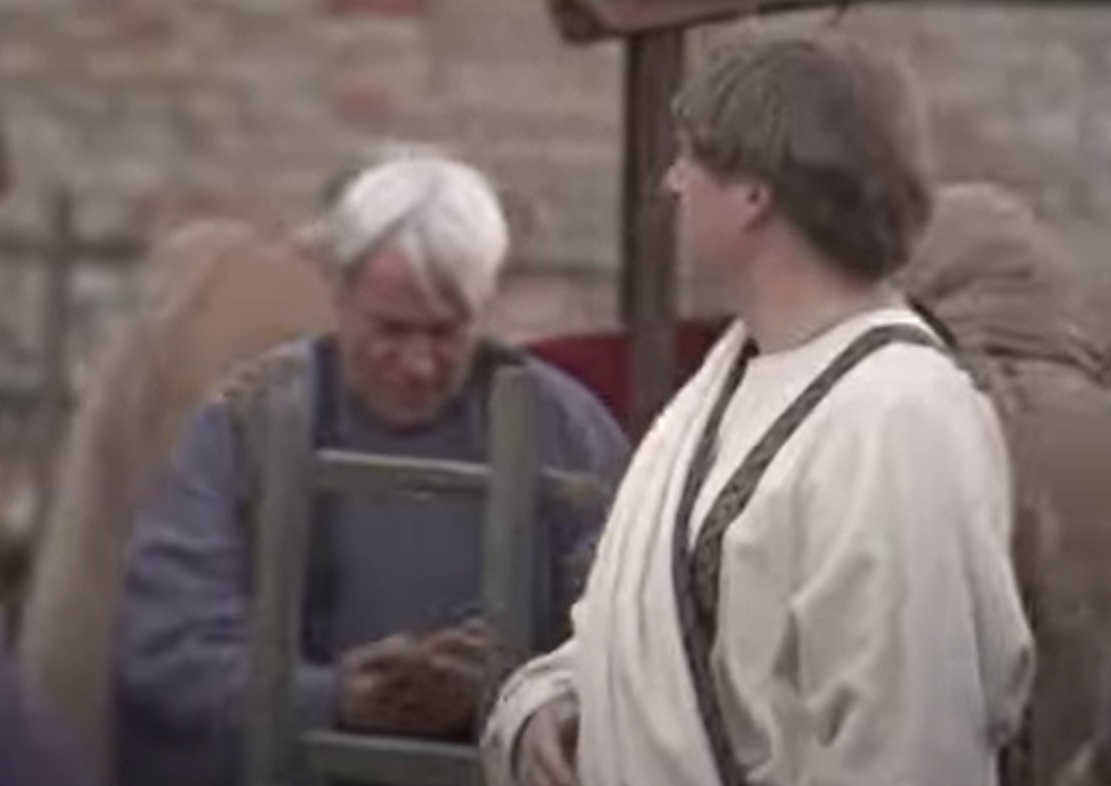 History, Rome: Rise and Fall of an Empire (2008)
History, Rome: Rise and Fall of an Empire (2008)
Hygiene: The Spread Of Disease
You see, the tersorium was a communal tool—it was shared. Therefore, if one person visited the public bathroom, but just so happened to have intestinal worms, he could easily spread it to others via the shared tersorium. Not a pleasant thought.
 History, Rome: Rise and Fall of an Empire (2008)
History, Rome: Rise and Fall of an Empire (2008)
Hygiene: Made For The Lower Classes
These public toilets were quite filthy and predominantly used by the lower classes. They were rarely well cared for. After all, it was the rich elite who constructed them in the first place, desiring to keep the streets free of refuse. But beneath the surface, the situation was even more dire.
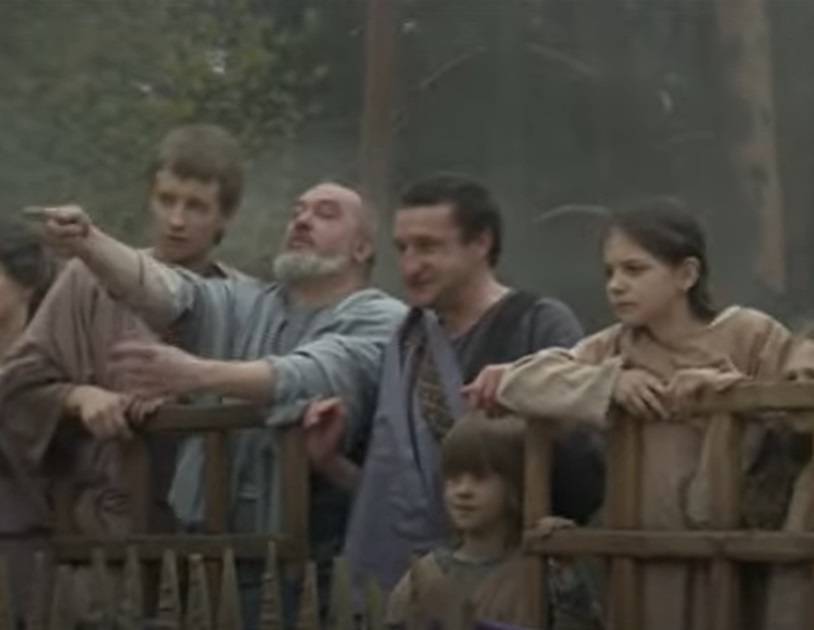 History, Rome: Rise and Fall of an Empire (2008)
History, Rome: Rise and Fall of an Empire (2008)
Hygiene: Vermin
The sewers were a dangerous place, not only because of the rats, insects, and snakes, but also because of the flammable methane. And like many other aspects of Roman culture, these toilets were not designed for women.
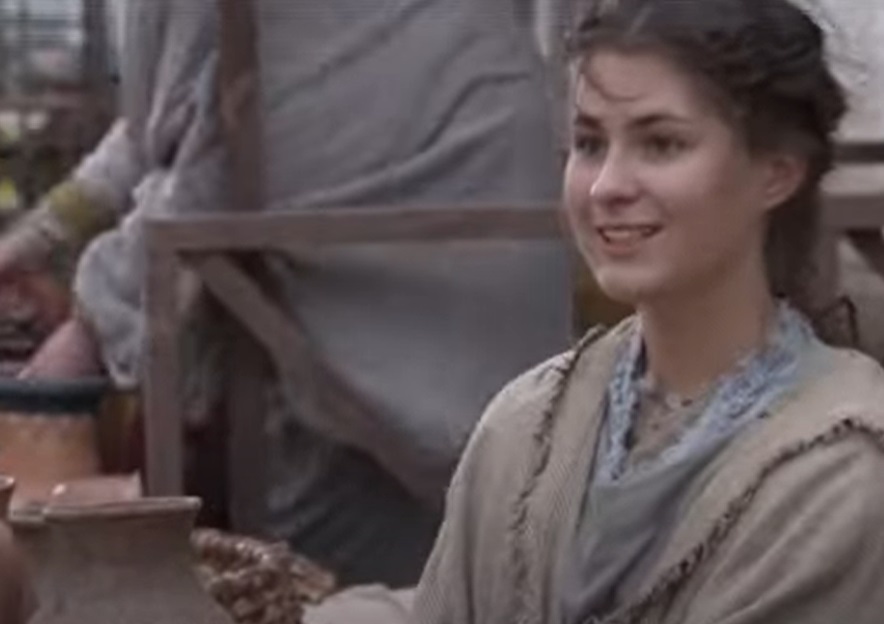 History, Rome: Rise and Fall of an Empire (2008)
History, Rome: Rise and Fall of an Empire (2008)
Hygiene: A Dangerous Place For Women
Only in desperate times would a woman choose to use the public toilets. Doing so would put her in a vulnerable place, where her chances of being attacked skyrocketed. A high-class woman would never set foot in such a place.
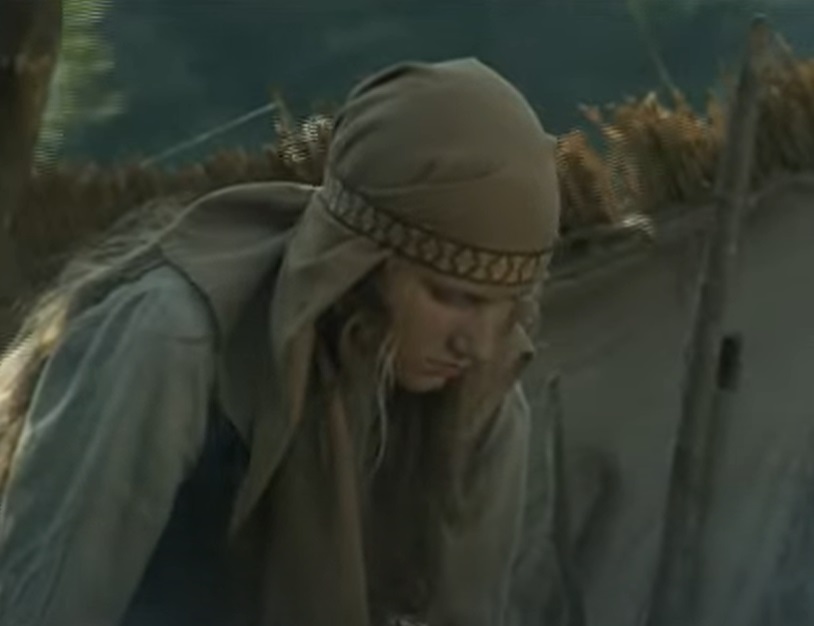 History, Rome: Rise and Fall of an Empire (2008)
History, Rome: Rise and Fall of an Empire (2008)
Hygiene: High-Class Chamber Pots
The elite went to the bathrooms in far more enjoyable conditions. They used chamber pots emptied by their slaves. Furthermore, as they feared vermin, they didn't bridge any connection between their personal cesspools and the public sewers. Instead, they hired people to empty their cesspools.
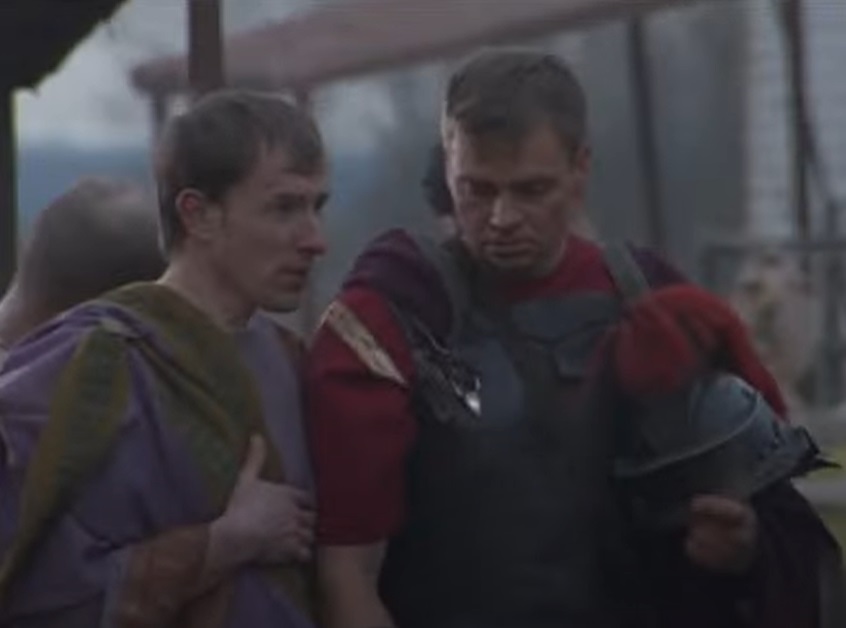 History, Rome: Rise and Fall of an Empire (2008)
History, Rome: Rise and Fall of an Empire (2008)
Hygiene: The Greatest Sewer
Though the ancient Romans did build one of the earliest sewage systems, known as the Greatest Sewer or Cloaca Massima, it certainly wasn't perfect. After all, it moved waste away from the city center, dumping it in the River Tiber. This, of course, posed a serious health risk.
Hygiene: The Tiber
Though on the surface the sewage system kept the city relatively free of accumulating waste, the Tiber became exceptionally polluted. Unfortunately, the river was also an important water source. Imagine collecting water for drinking and washing from the same place your sewage system empties into.
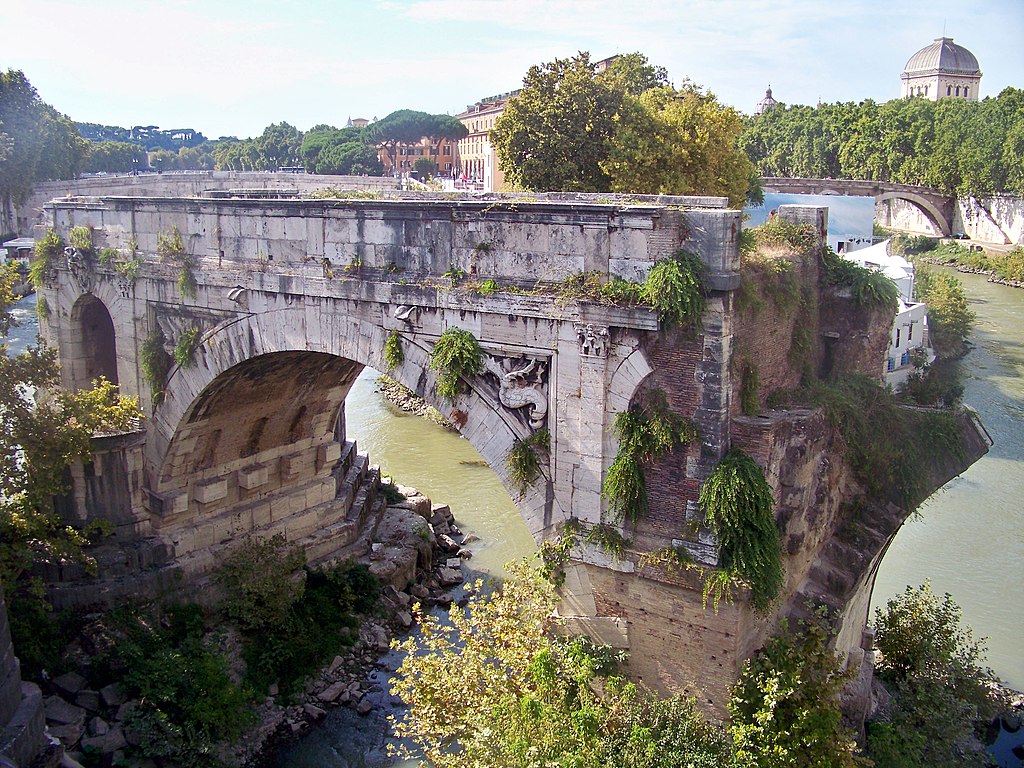 Larry, CC BY 2.0, Wikimedia Commons
Larry, CC BY 2.0, Wikimedia Commons
The Patriarchy
So, what were relationships like in ancient Rome? Well, the foundation of any relationship was patriarchy. Men ruled the roost, with the male head of the household holding the most power. He was known as the pater familias.
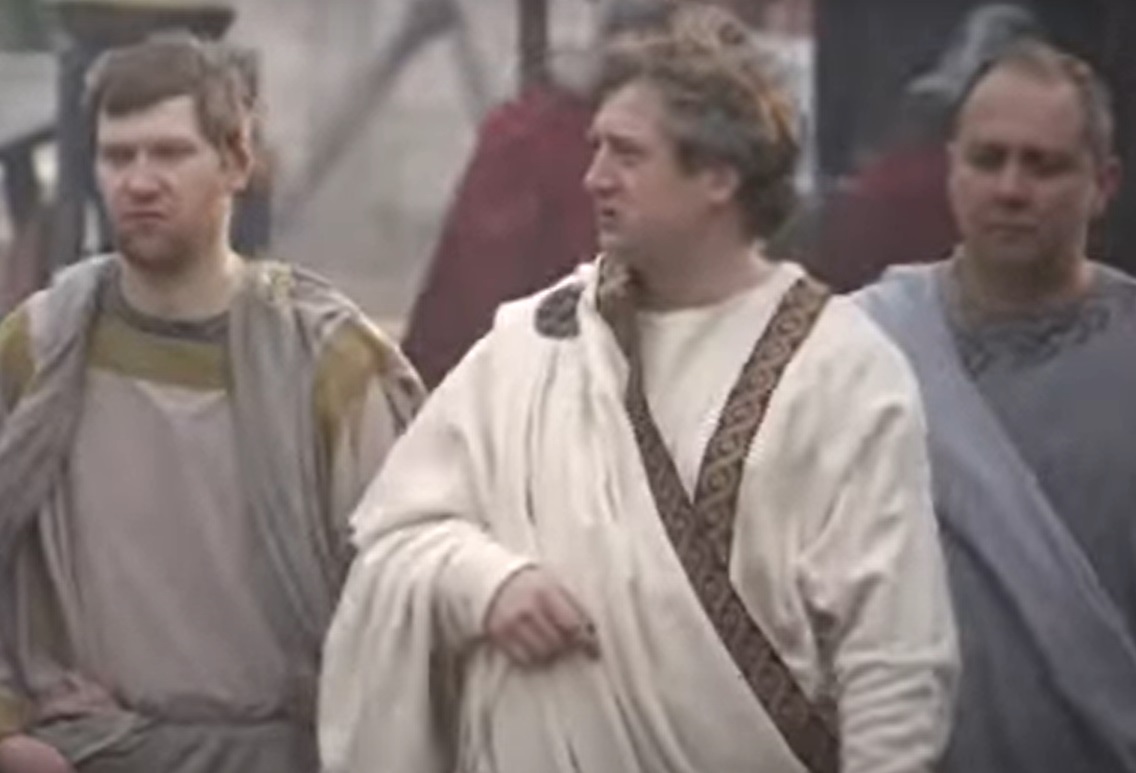 History, Rome: Rise and Fall of an Empire (2008)
History, Rome: Rise and Fall of an Empire (2008)
The Patriarchy: The Pater Familias
If you just happened to be a pater familias, you controlled your entire family until the end of your life—at which point, your male heir would take your place. However, if you were a woman, life looked very different.
 History, Rome: Rise and Fall of an Empire (2008)
History, Rome: Rise and Fall of an Empire (2008)
The Patriarchy: Women Had No Power
Being a woman in ancient Rome was tough, as they weren't allowed to vote or hold any position of power. They were at the mercy of the male head of the household, which—depending on their situation—could be their husband or a male family member. A pater familias could give a woman to another pater familias through marriage.
 History, Rome: Rise and Fall of an Empire (2008)
History, Rome: Rise and Fall of an Empire (2008)
The Patriarchy: Rich Women
However, women hailing from rich backgrounds enjoyed some privileges. Though high-class women couldn't be in charge, they could influence the men in their lives behind the scenes. This was, if anything, a small sliver of political sway in an all-male arena.
 History, Rome: Rise and Fall of an Empire (2008)
History, Rome: Rise and Fall of an Empire (2008)
Slavery
Slavery also played a massive role in the way ancient Rome operated—but through the lens of the present day, the details of it are very unsettling. To begin with, there were two different classes of slaves.
 History, Rome: Rise and Fall of an Empire (2008)
History, Rome: Rise and Fall of an Empire (2008)
Slavery: Low-Skill Laborers
If you were a slave with low skills, you were likely a laborer working in the mines, fields, or mills. Quite tragically, this would probably be your destiny, with barely any chance of one day winning your freedom. There was also little chance that you'd be able to move up the social ladder.
 History, Rome: Rise and Fall of an Empire (2008)
History, Rome: Rise and Fall of an Empire (2008)
Slavery: Skilled Laborers
Above the unskilled slaves were educated slaves who took on specialized occupations: chefs, artists, entertainers, accountants, librarians, doctors—the list goes on. You could be one of the smartest people around and still be a slave. However, if you belonged to this tier, there was at least some hope of one day becoming a freedperson.
Slavery: Horrible Conditions
Being a slave in ancient Rome was a nightmare. You were considered property and had no rights whatsoever. This meant that their owners could treat them humanely or inhumanely—however they wished.
 History, Rome: Rise and Fall of an Empire (2008)
History, Rome: Rise and Fall of an Empire (2008)
Slavery: At The Mercy Of Their Owners
Slaves were at their owner's mercy, and who their owner was could determine their entire lives. How well they ate, where they slept, their access to healthcare—but also whether they were brutally exploited or abused.
 History, Rome: Rise and Fall of an Empire (2008)
History, Rome: Rise and Fall of an Empire (2008)
Freedmen
Female slaves who gave birth welcomed babies already fated to live a life of servitude. However, some slaves were able to gain their freedom. One way to do this was to buy one's freedom. Some slaves could earn money if they were doing business for their owners. If they saved enough, they could buy their way out. But that wasn't all.
 History, Rome: Rise and Fall of an Empire (2008)
History, Rome: Rise and Fall of an Empire (2008)
Freedmen: Winning Freedom
Sometimes an owner would free their skilled slave upon their passing—usually outlined in their will. On extremely rare occasions, some owners would simply grant their slave his or her freedom.
 History, Rome: Rise and Fall of an Empire (2008)
History, Rome: Rise and Fall of an Empire (2008)
Freedmen: Never Equal
Once they gained their freedom, slaves became freedmen, finally becoming real Roman citizens—but tragically, they would never be seen as equal, thanks to their histories.
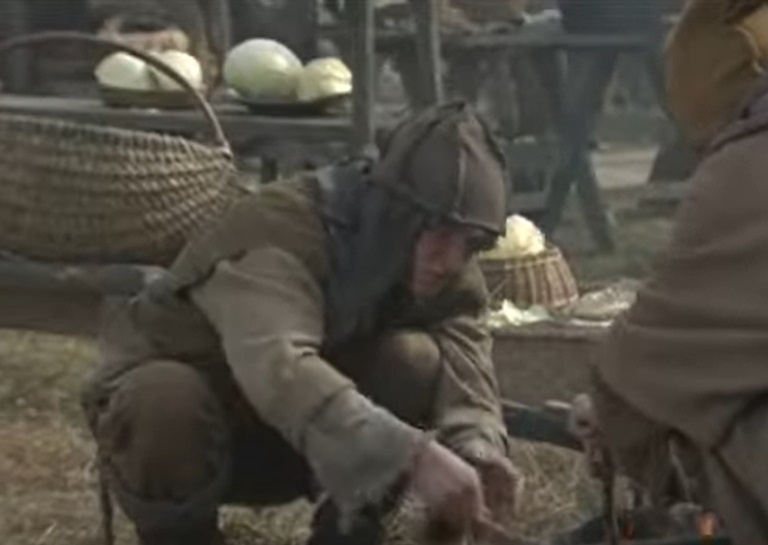 History, Rome: Rise and Fall of an Empire (2008)
History, Rome: Rise and Fall of an Empire (2008)
Freedmen: Changing Their Destiny
Most freedmen would never be able to climb the societal ladder, and would be relegated to farming or the trades. Less likely—though not unheard of—freedmen could build their wealth through military service, business opportunities, and specialized crafts.
 History, Rome: Rise and Fall of an Empire (2008)
History, Rome: Rise and Fall of an Empire (2008)
Gay Relationships
The idea of masculinity during the Republic was both familiar and unfamiliar. It was still very much about domination, and this also leaked into the way people viewed intimacy. If you were the active and dominating partner, it cemented your masculinity.
 History, Rome: Rise and Fall of an Empire (2008)
History, Rome: Rise and Fall of an Empire (2008)
Gay Relationships: "Conquest Mentality"
A man's masculinity had a lot to do with "conquest mentality". However, this also meant that it didn't quite matter whether your partner was a male or a female, as long as you were the one in control, steering the ship.
 History, Rome: Rise and Fall of an Empire (2008)
History, Rome: Rise and Fall of an Empire (2008)
Gay Relationships: A Double Standard
Considering the taboo of gay relationships in many places today, it might be shocking to learn that ancient Roman society believed it to be quite normal for a man to yearn for both men and women. It was not an immoral act for a man to sleep with another man... as long as they were the ones in charge of the act itself.
 History, Rome: Rise and Fall of an Empire (2008)
History, Rome: Rise and Fall of an Empire (2008)
Gay Relationships: Following The Rules
Of course, there were still rules to follow when it came to one's reputation. For instance, a man was looked down upon if he slept with another man's wife, underage son, or unmarried daughter. However, if he had a man's permission, he could sleep with his slave.
 History, Rome: Rise and Fall of an Empire (2008)
History, Rome: Rise and Fall of an Empire (2008)
Gay Relationships: A Rare Occurrence
But what about relationships between women? Unfortunately, there doesn't seem to be much documentation of sensual relationships between women in ancient Rome. Based on what Roman writers shared, it was a very rare occurrence.
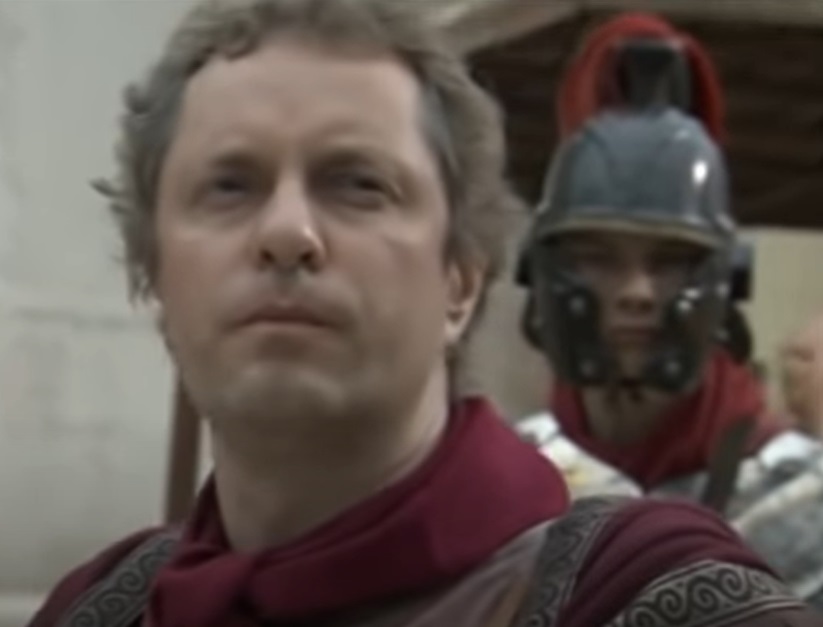 History, Rome: Rise and Fall of an Empire (2008)
History, Rome: Rise and Fall of an Empire (2008)
What Did People Wear?
If you were to live in ancient Rome, your clothes would have said a lot about you, communicating your social status and occupation.
For instance, plebeians—or common people—wore textured tunics in a dark color. In contrast, patricians—higher class folks—wore tunics made of airy linen or white wool. But this is just one example.
 Sailko, CC BY 3.0, Wikimedia Commons
Sailko, CC BY 3.0, Wikimedia Commons
Footwear Was A Status Symbol
Just like today, footwear was a major marker of someone's class. Senators wore brown shoes, soldiers wore weighty boots, and consuls wore white footwear. Meanwhile, the upper class slipped on sandals in warm colors like orange and red. The common colors for women's footwear were green, white, and yellow.
However, there's one piece of ancient Roman clothing that most people associate with the time.
What Men Wore: The Toga
Even those unfamiliar with ancient Rome's culture are likely to recognize the distinctive garment that men wore: the toga. This long cloth would be worn over a tunic, draping over the shoulders and winding around the waist. Apparently, Rome's founder Romulus's favorite garment to wear was the toga.
But though it has been called the "national costume" of Rome, it wasn't always beloved.
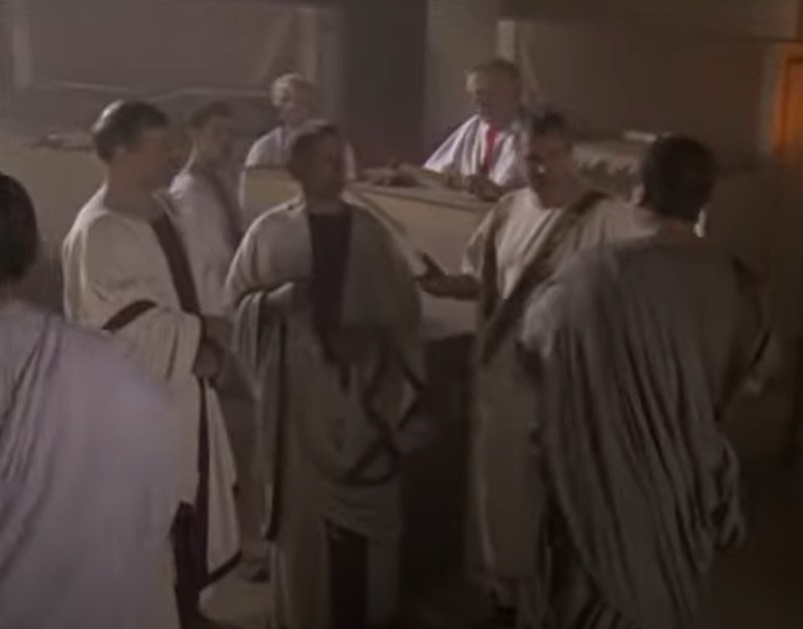 History, Rome: Rise and Fall of an Empire (2008)
History, Rome: Rise and Fall of an Empire (2008)
What Men Wore: The Toga
Though the toga may have begun as a practical piece to wear, it evolved into a more luxurious and complicated garment. This definitely made it a less appealing piece because it could be quite difficult to put on.
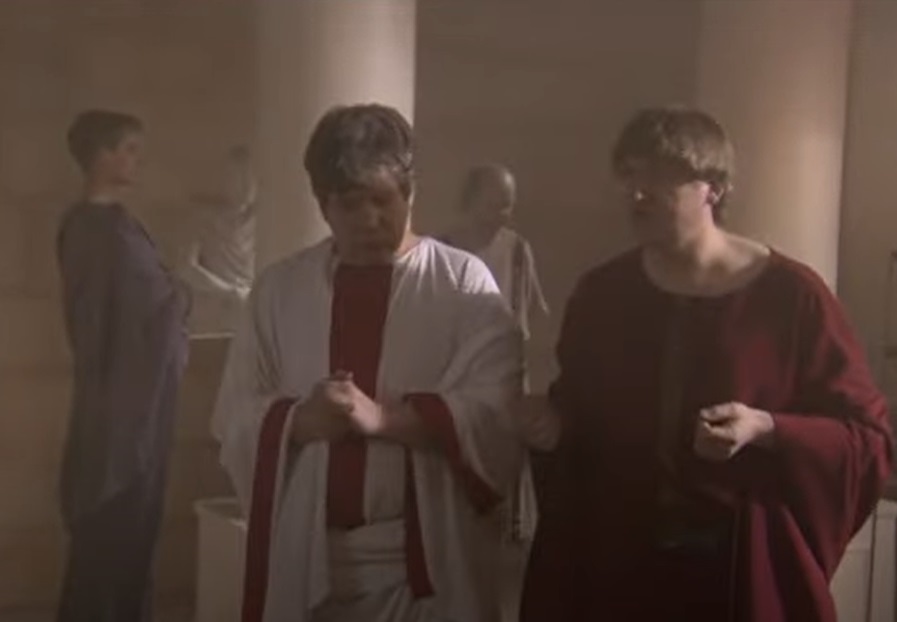 History, Rome: Rise and Fall of an Empire (2008)
History, Rome: Rise and Fall of an Empire (2008)
What Men Wore: The Toga
Over time, the lower and middle classes ceased wearing togas. Eventually, they were only worn for special occasions, or by the elite.
Though it's believed that women also wore togas at an early date, this wasn't their preferred garment in the long run.
 History, Rome: Rise and Fall of an Empire (2008)
History, Rome: Rise and Fall of an Empire (2008)
What Women Wore: The Stola
From the early Roman Republic to the start of the 2nd century CE, women wore something called a stola. But just like the men's toga, it underwent its own evolution. Though it was once a popular garment during Republican times, during the Augustan times, it reflected a woman's married status, with only the higher class wearing them.
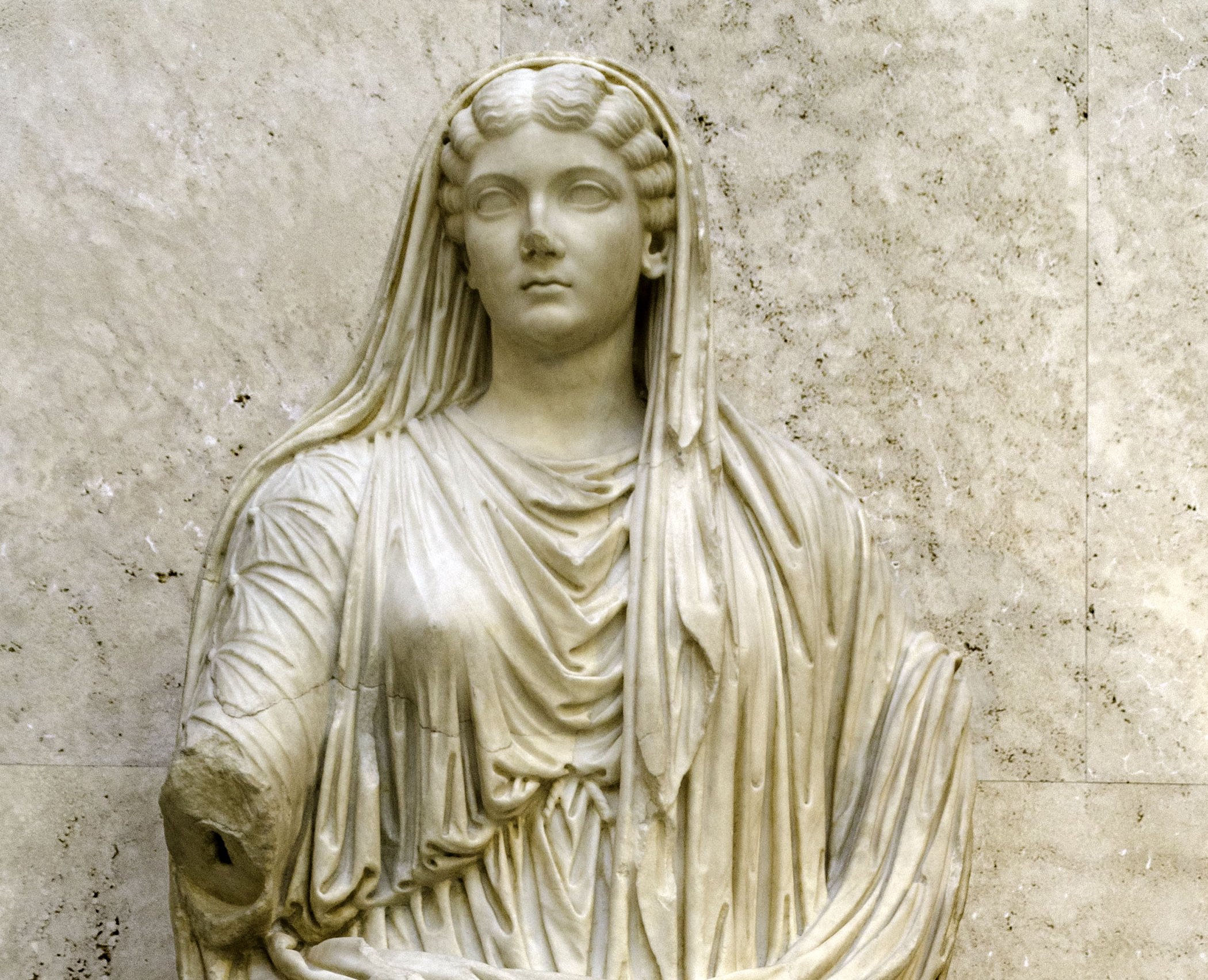 Ángel M. Felicísimo, CC BY-SA 4.0, Wikimedia Commons
Ángel M. Felicísimo, CC BY-SA 4.0, Wikimedia Commons
What Women Wore: The Stola
Women's stolas were usually vibrant in color and fastened with a decorative brooch known as a fibula. They would be layered over a tunic and traditionally paired with a shawl.
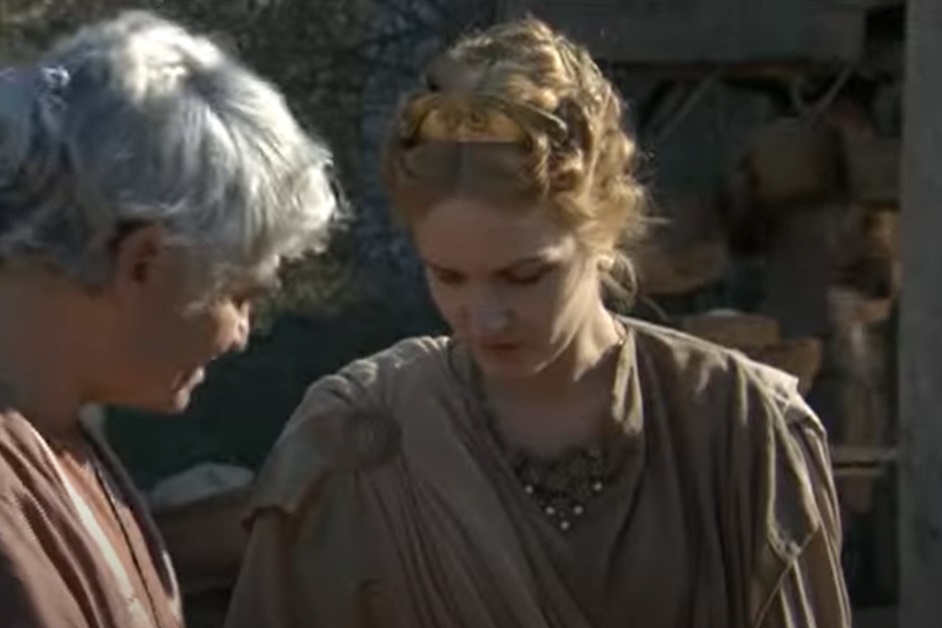 History, Rome: Rise and Fall of an Empire (2008)
History, Rome: Rise and Fall of an Empire (2008)
Entertainment: The Campus
Near the Tiber River in ancient Rome, soldiers trained at the Campus, eventually becoming the center for sports—track and field. Here, young people came together to participate in all kinds of physical activities.
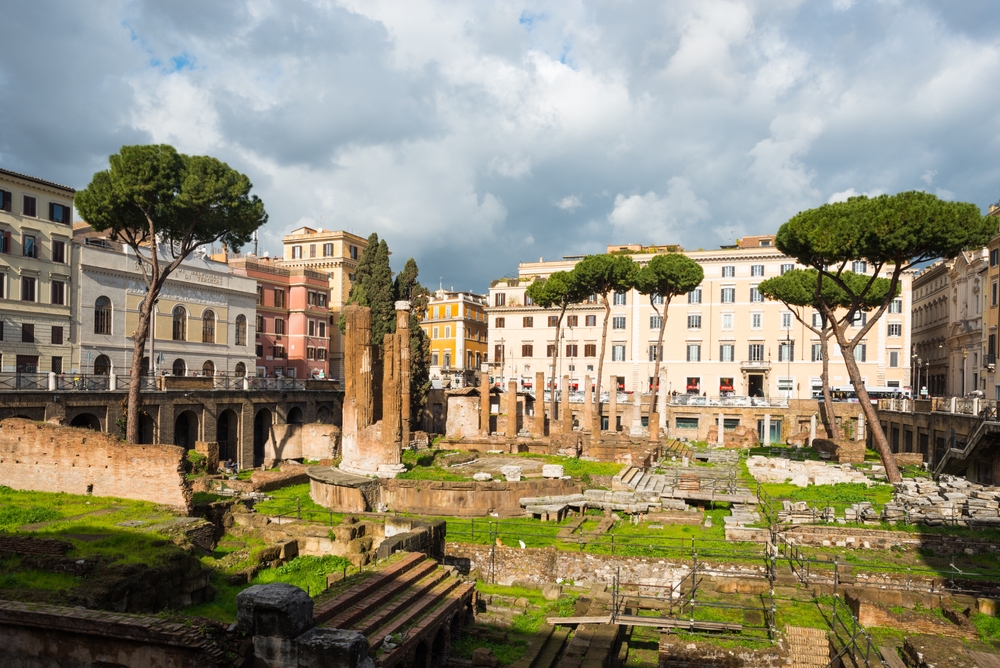 Robert Harding Video, Shutterstock
Robert Harding Video, Shutterstock
Entertainment: Popular Sports
At the Campus, people jumped, raced, boxed, and wrestled. Other sports included swimming, riding, and throwing. However, one part of society was barred from joining in: women.
Entertainment: Ball Sports
Similar to the flocks of fans that descend on sports arenas, ancient Romans had a love for ball sports, playing catch and field ball, as well as something similar to football. But strenuous activity wasn't the only way for them to play a game.
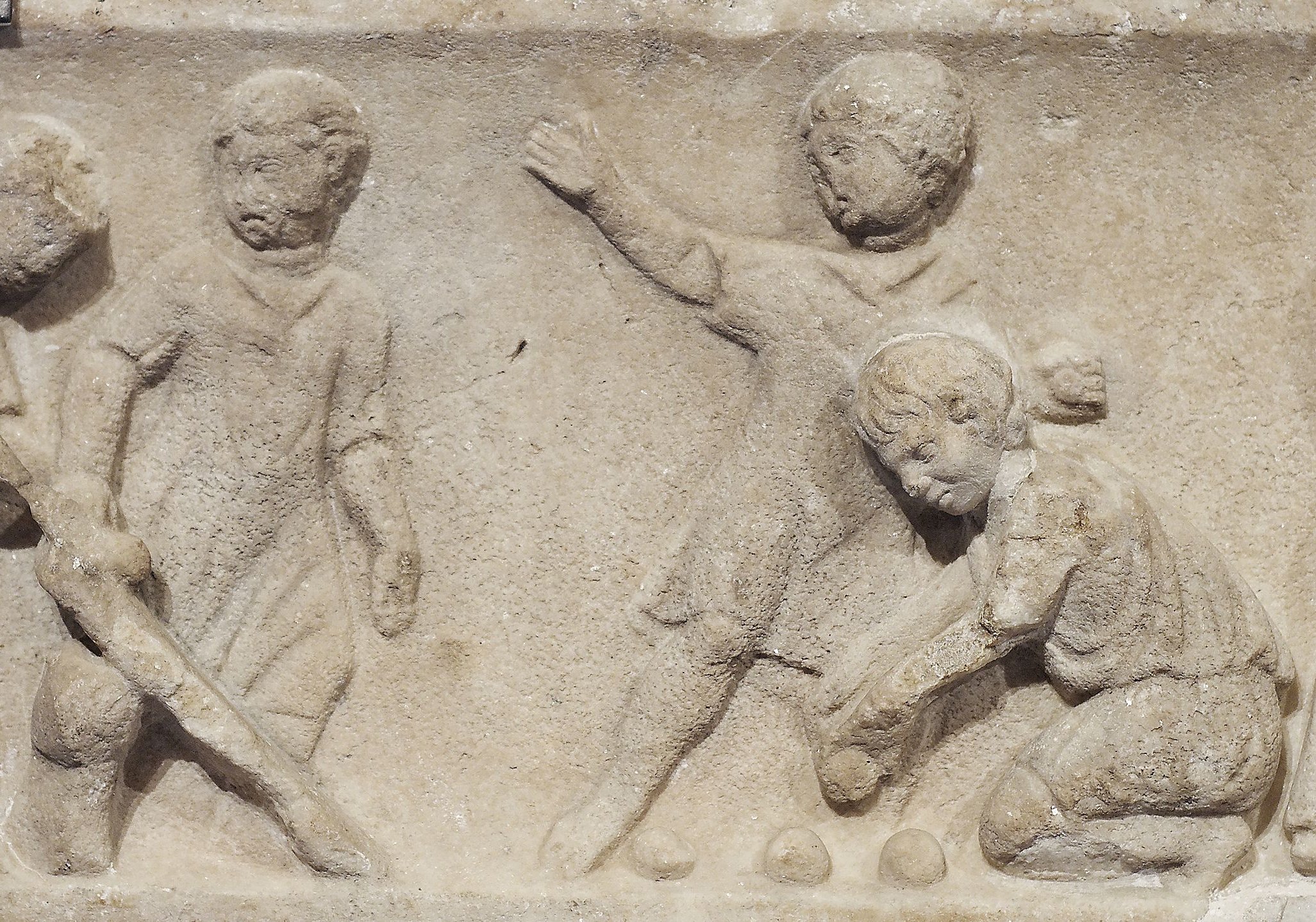 Louvre Museum, CC BY 3.0, Wikimedia Commons
Louvre Museum, CC BY 3.0, Wikimedia Commons
Entertainment: Board Games
Entertainment also came in the form of board games, such as tesserae or tali (dice), Calculi (Roman checkers), terni lapilli (tic-tac-toe), and latrunculi (Roman chess). However, when you think of ancient Rome, you might be thinking of some of their more extreme spectacles.
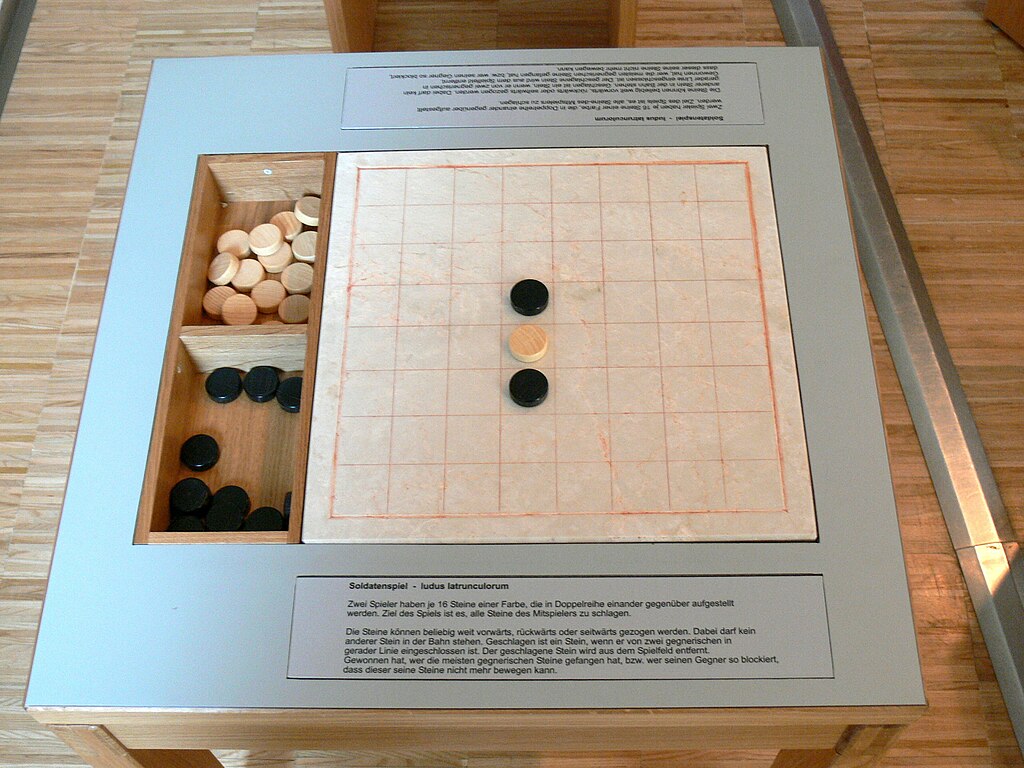 Wolfgang Sauber, CC BY-SA 3.0, Wikimedia Commons
Wolfgang Sauber, CC BY-SA 3.0, Wikimedia Commons
Chariot Racing
The ancient Romans certainly knew how to put on a show—and they often did so on the grandest stages possible. This included chariot racing, which usually took place at the Circus Maximus.
Chariot Racing: The Circus Maximus
The Circus Maximus could host as many as 250,000 guests. Reconstructed at the request of Julius Caesar in 50 BC, it was around 600 meters long and 225 meters wide. However, there was one grisly detail: one end was wider than the other.
Chariot Racing: A Dangerous Course
You see, once the chariots began racing, the competition could take a bloody turn. The chariots had free reign and could trip up other riders, causing them to crash. In the place where the course curved, major accidents turned the track into a nightmare. But that wasn't the only dangerous element.
Chariot Racing: Holding The Reins
In Greek chariot racing, the charioteers would hold the reins in their hands. But in Rome, they opted for a more terrifying method: They tied their reins around their waist. The consequences of this could be fatal.
Chariot Racing: Dragged Around The Track
Imagine being thrown from your chariot during an accident. With the reins secured to your waist, you'd be likely dragged along the rough ground. In these cases, only two destinies awaited you.
Chariot Racing: Fatal Accidents
Equipped with a blade, charioteers had a chance to survive being dragged by their horses by cutting themselves loose. However, if they failed to act quickly enough, they would perish from their injuries.
But perhaps it was the danger that excited the large audiences, as well as the prospect of making a little money.
Chariot Racing: The Length
In order for there to be multiple races in a single day, these brutal races were only seven laps long, eventually lessening to just five laps. After all, chariot racing was a major money-maker.
Chariot Racing: The Betting
Another popular aspect of chariot racing was all the betting that went on. The public loved to place bets on the outcomes of the races, which drove the economy of the spectacle.
Chariot Racing: The Show-Offs
Now, it was most common for two or four horses to pull a chariot, but the more horses there were, the more important the race. For those charioteers wanting to showcase their talents, they could go to extreme lengths—sometimes riding behind as many as 10 horses, which was not an easy feat.
Chariot racing, of course, was not the only brutal form of entertainment.
Gladiators
In ancient Rome, a gladiator was a professional fighter who fought in massive arenas for the entertainment of an audience. They were prevalent between 105 BCE and 404 CE throughout the entire empire. But the life of a gladiator was incredibly bleak.
Gladiators: Short Life Spans
Gladiators went head to head in competitions, battling to the death—and as such, many didn't live very long. Though they won notoriety thanks to this occupation, many of these fighters came from poor backgrounds. For the most part, they were inmates or slaves. They also fought for the whims of the elite.
 History, Rome: Rise and Fall of an Empire (2008)
History, Rome: Rise and Fall of an Empire (2008)
Gladiators: They Were Pawns
Emperors and high-class Romans often showcased their power through a gladiator game. They used them to broadcast their riches and to commemorate special events. These vicious games were also an escape for the general public—a way to cast aside their own troubles.
Gladiators: The Colosseum
The largest arena where the gladiators fought was the Colosseum—a theater that saw a shocking number of slayings. Spectated by 30,000 to 50,000 onlookers, gladiators, religious martyrs, and prisoners met their ends on this stage.
Gladiators: Were There Any Women?
However, not all gladiators were slaves or inmates. Some aristocrats who'd lost their fortunes turned to the profession in order to survive.
Furthermore, there was also a time in Roman history when there were female gladiators as well. This, however, ended in 200 CE, when Septimius Severus prohibited women from taking part in the games.
 History, Rome: Rise and Fall of an Empire (2008)
History, Rome: Rise and Fall of an Empire (2008)
Gladiators: Training
Becoming a gladiator was no laughing matter. The Roman Empire had gladiator schools—and one of the most famous training grounds was in Capua. Due to the nature of the sport, the turnover rate was quite distressing. There was always a demand for gladiators, and men were recruited from all over the empire.
However, these schools were far from glamorous.
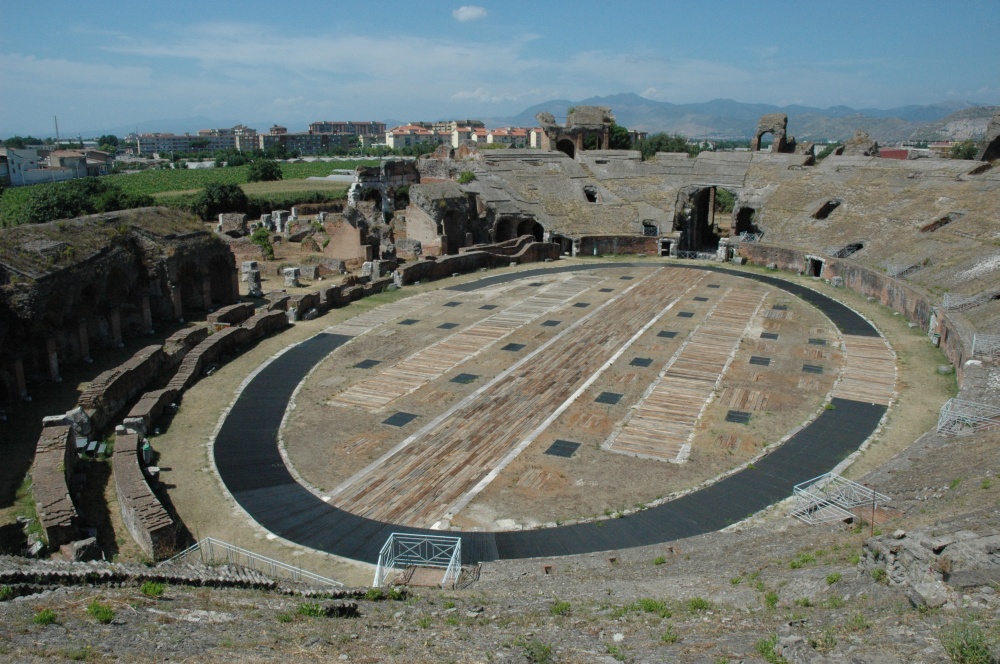 Stanley-goodspeed, CC BY-SA 3.0, Wikimedia Commons
Stanley-goodspeed, CC BY-SA 3.0, Wikimedia Commons
Gladiators: Living Conditions
Gladiators did not have their own freedom and though they were kept healthy and had decent food, they still were still locked up in tiny cells. They were larger-than-life figures in the ring, but their lives were shockingly limited and short.
Gladiators: The Short Sword
The Latin word gladiatores eventually led to the term "gladiator"—its root being the gladius, or short sword. One of the main tools used by the gladiators was the short sword, but more than that, the weapons they wielded had everything to do with the class they belonged to.
Gladiators: Four Classes
If you were a gladiator in ancient Rome, you would have belonged to one of four classes: The Samnite, The Thracian, The Myrmillo, and The Retiarius. The distinctions among these groups helped define a gladiator's destiny.
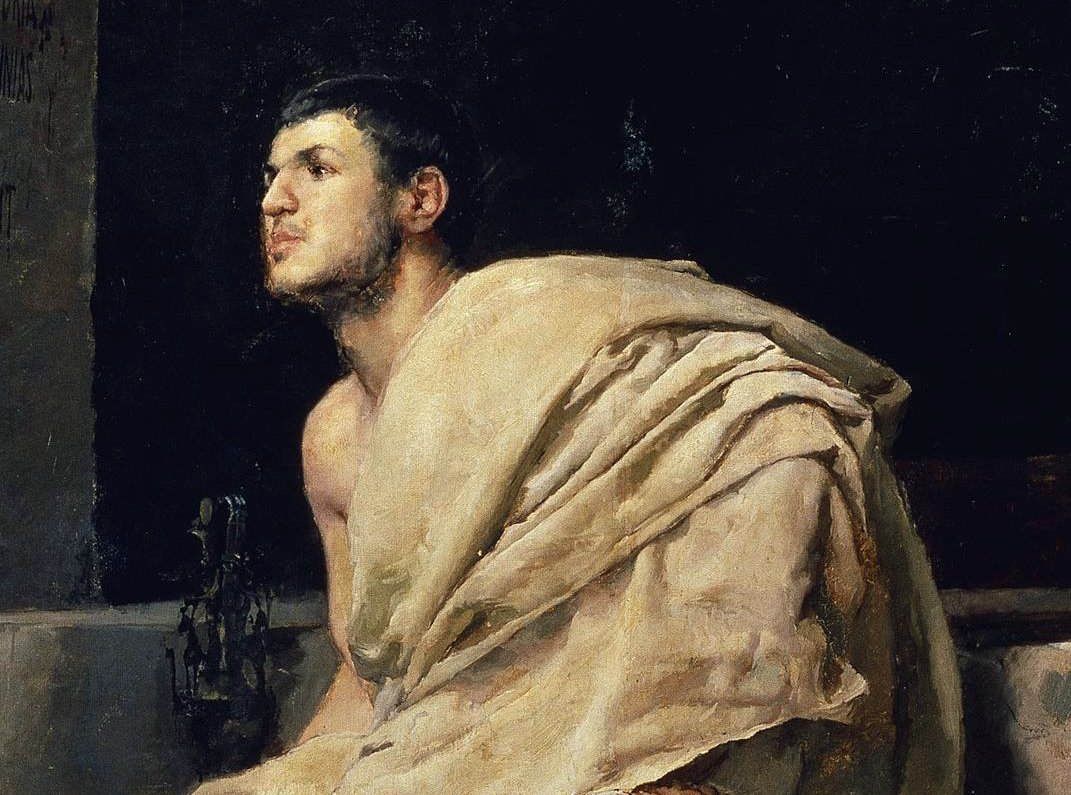 José Moreno Carbonero, Wikimedia Commons
José Moreno Carbonero, Wikimedia Commons
Gladiators: The Samnite And The Myrmillo
Gladiators belonging to the Samnite class wore the most armor and carried a lance or sword, as well as a sizable shield. Somewhat similar to the Samnite class, the Myrmillo gladiators were equipped with a short sword and shield, but had less armor. Sometimes called fishmen, their helmets bore a crest in the shape of a fish.
 Mary Harrsch, CC BY-SA 4.0, Wikimedia Commons
Mary Harrsch, CC BY-SA 4.0, Wikimedia Commons
Gladiators: The Thracian
If you were a Thracian warrior, you wielded something called a sica—a small, curved sword—and protected yourself with a small shield. But perhaps the most daunting class to belong to was the Retiarius class.
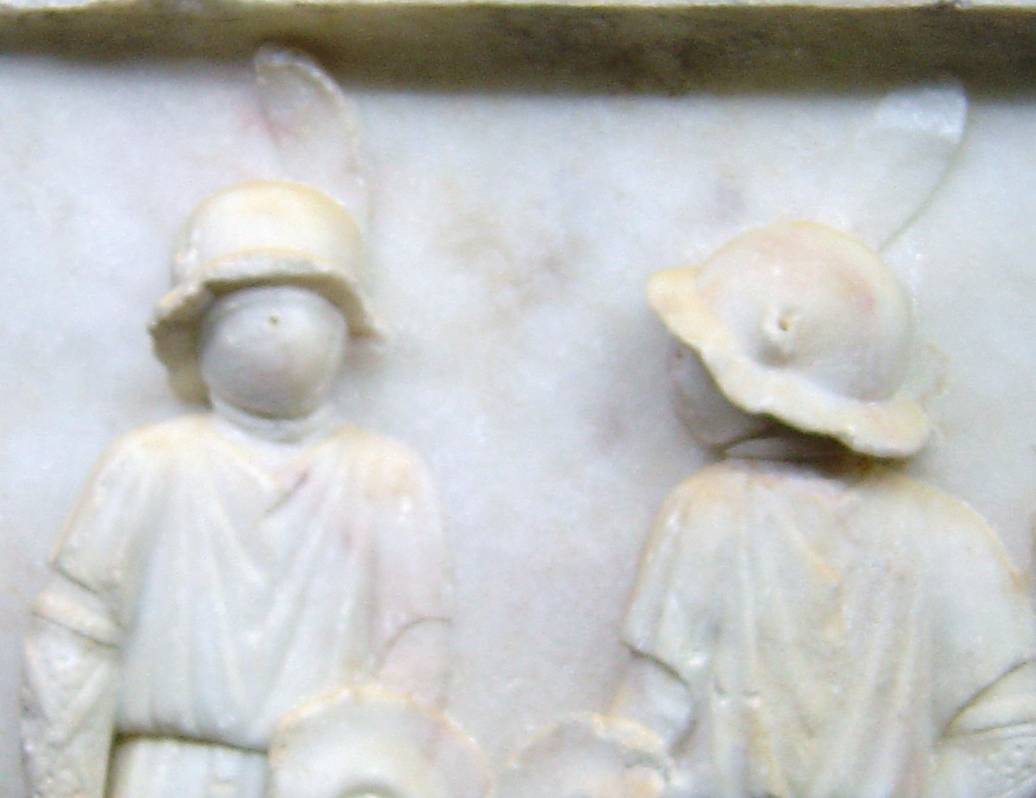 Yuntero, CC BY 3.0, Wikimedia Commons
Yuntero, CC BY 3.0, Wikimedia Commons
Gladiators: The Retiarius
Retiarius gladiators went into battle with no helmet and one padded piece of armor on their shoulder. To take down their opponents, they'd come at them with a weighted net. Once they'd trapped their enemy, they'd impale them using a trident.
Gladiators: Other Fighters
Mixing up battles between different classes helped keep the games exciting. Each class had their own strengths and weaknesses, which provided variety. Outside of these classes, there were also other fighters, such as boxers and archers. The bestiarii faced down wild animals.
But what if a gladiator didn't want to fight?
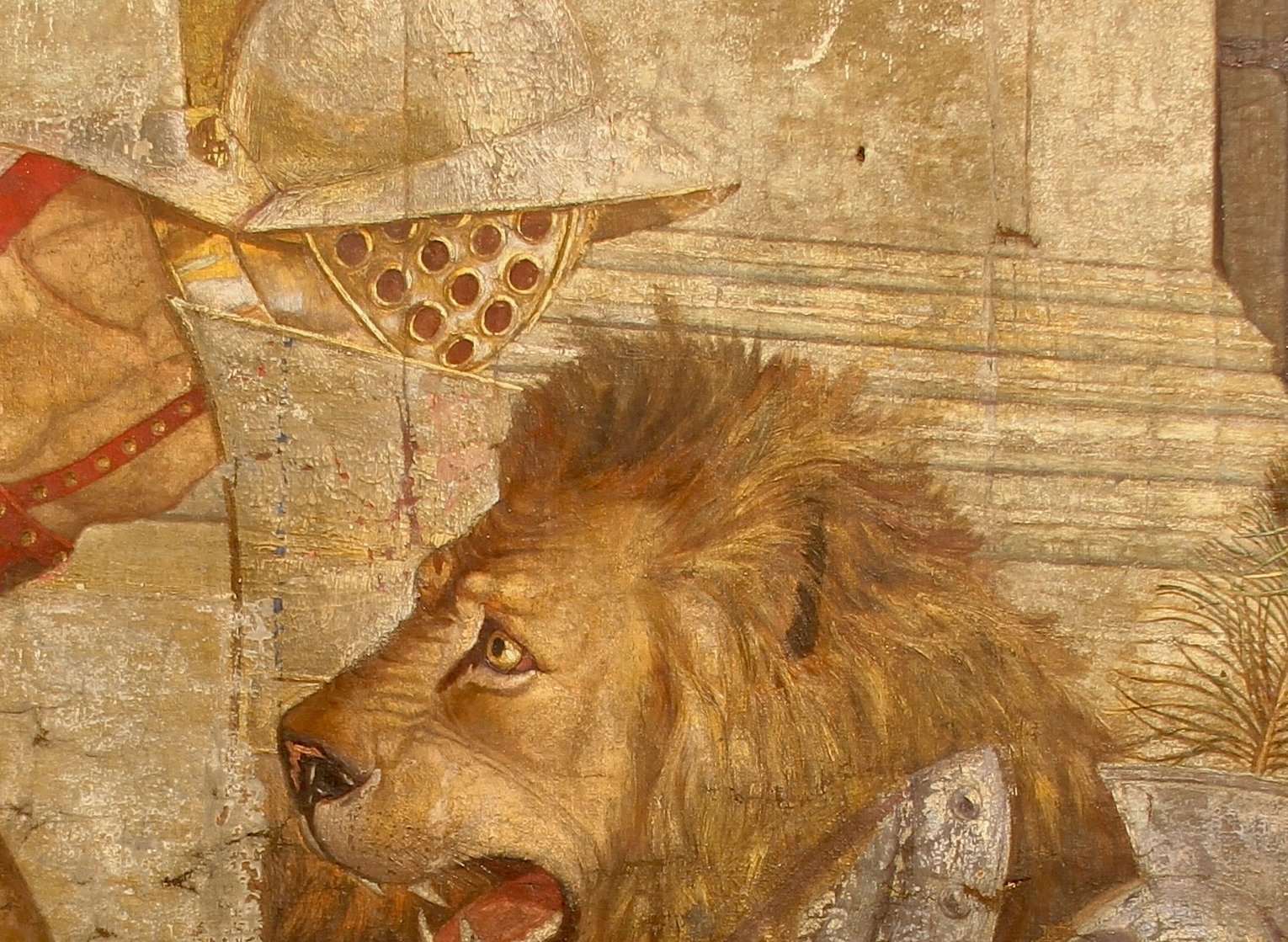 French Painting, Wikimedia Commons
French Painting, Wikimedia Commons
Gladiators: Refusing To Fight
If a gladiator refused to fight, they'd be forced to by their manager or teammates, usually through some brutal form of persuasion involving piping hot metal or the mighty sting of a lashing. But that wasn't the only thing that got them moving.
Gladiators: No Choice
If they were already facing down their enemy, their fear of being struck down usually compelled them to engage in combat—not to mention the overwhelming sound of thousands of cheering onlookers.
In the end, of course, there could only be one winner...
Gladiators: Asking For Mercy
If, by chance, a gladiator lost but still lived, he could ask for mercy. Dropping his tools to the ground, the defeated warrior would raise a finger—but he wouldn't be in the clear just yet.
His opponent would then be given the option to spare the loser or save him. However, if the emperor attended the event, he would determine the loser's fate—a decision usually swayed by the enthusiasm of the audience.

